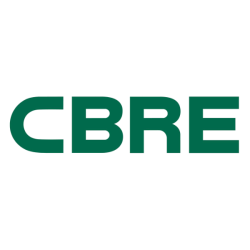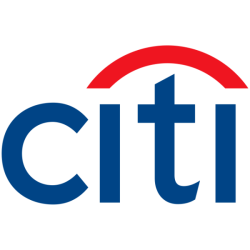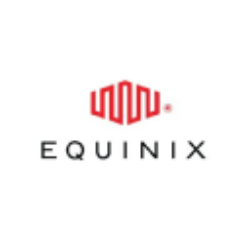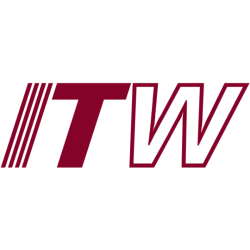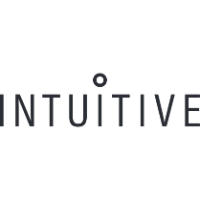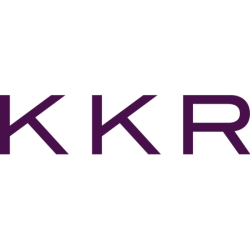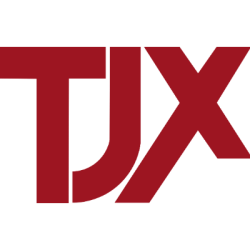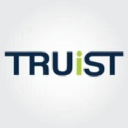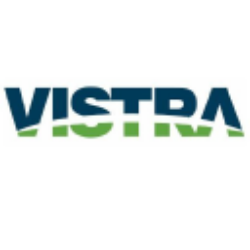Updated: June 7, 2025

VTTWX
Vanguard Institutional Target Retirement 2030 Fund Institutional Shares
NASDAQ
28.83
-0.24

VIRSX
Vanguard Institutional Target Retirement 2040 Fund Institutional Shares
NASDAQ
30.89
-0.36

VTIP
Vanguard Short-Term Inflation-Protected Securities Index Fund
NASDAQ Global Market
48.87
0.01
We have not found the stock you are looking for

Vanguard High Dividend Yield Index Fund
New York Stock Exchange Arca:
VYM
Loading
Loading
Loading
Ticker
Loading
Market Cap
Loading
Revenue
Loading
EPS
Loading
PE Ratio
Loading
Volume
Loading
Dividend
Loading
Week Range
Loading
Beta
Loading
Frameworks
Name
Score
Company Overview
Loading
Vanguard High Dividend Yield Index Fund
Country
Loading
Founded
Loading
IPO Date
Loading
industry
Loading
Employees
Loading
CEO
Loading
Top News
Economic Moat Analysis
-
Analysis
-
Analysis
-
Analysis
-
Analysis
-
Analysis
-
Analysis
-
Analysis
-
Analysis
-
Analysis
-
Analysis
-
Analysis
-
Analysis
-
Analysis
-
Scoring
- Information
1. 10Y Growth Analysis
Score: 8.2 (Strong)
VYM is projected to maintain steady growth over the next decade, benefiting from diversified holdings, consistent dividend payouts, and strategic investments in technology and sustainability. While challenges such as regulatory changes and economic uncertainties exist, the ETF's composition and focus on stable sectors provide a resilient outlook.
2. Scenario Analysis
Score: 6.3 (Balanced)
The overall score reflects a mixed resilience of VYM across various scenarios, highlighting strengths in regulatory adaptation and market expansion but vulnerabilities in economic downturns and competitive pressures. Score without stress scenario: 6.7 – Mixed
3. Risk & Opportunities
Score: 6.6 (Balanced)
The overall score of 6.6 indicates a balanced mix of risks and opportunities for VYM. While there are notable risks associated with market volatility and economic conditions, the ETF's diversification and stable income potential present strong opportunities for investors seeking reliable yields.
4. Economic Moat
Score: 7.0 (Strong)
VYM exhibits strong cost advantages and efficient scale, contributing to its overall strong competitive position. While the fund benefits from Vanguard's brand and operational efficiencies, its network effects and switching costs are less pronounced, indicating room for further enhancement. The combined strengths provide a robust foundation for the fund's market presence, positioning it well against competitors.
5. Business Model
Score: 7.8 (Strong)
The score reflects VYM's strong positioning as a cost-effective, diversified income-generating investment option, with effective management and robust channel access. Minor weaknesses include the inherent market risks associated with dividend-focused strategies.
6. Management Analysis
Score: 7.8 (Strong)
The management of VYM is competent, with strengths in strategic direction, operational efficiency, and leadership stability. They show a strong commitment to stakeholder value and maintain high levels of transparency. However, there is room for improvement in innovation and adaptability to fully capitalize on emerging opportunities.
7. BCG Matrix
Score: 8.0 (Strong)
VYM demonstrates a robust strategic position with strong emphasis on dividend growth and large-cap stability, though it faces challenges in certain sectors like energy and retail, which are underperforming compared to market trends.
8. SWOT Analysis
Score: 7.0 (Strong)
The overall score reflects VYM's strong strengths and opportunities that slightly outweigh its balanced weaknesses and threats. The fund's diversified portfolio and brand recognition, combined with increasing demand for income-generating investments, position it well. However, sector concentration and interest rate sensitivity pose challenges that need strategic management.
9. Porter's 5 Forces
Score: 6.2 (Balanced)
This score reflects a moderate level of impact from the competitive forces analyzed. The industry faces moderate barriers to entry and supplier power, while buyer power and substitutes pose more of a threat. Industry rivalry is relatively low, indicating a stable competitive environment.
10. PESTLE Analysis
Score: 6.8 (Balanced)
The overall score of 6.8 indicates a neutral environment, with a balance of positive and negative influences affecting VYM. Political and economic factors present challenges, while social and technological advancements offer opportunities. Legal and environmental considerations remain crucial for strategic planning.
11. ESG Analysis
Score: 7.2 (Strong)
The company demonstrates a balanced ESG performance with notable strengths in governance and social factors. Environmental initiatives are in progress but require increased urgency to meet industry standards. The company's commitment to sustainable practices is evident, yet there is room for improvement, particularly in environmental impact reduction.
12. Company Milestones
Score: 7.7 (Strong)
No summary available.
Final Overall Score
Score: 7.2 (Strong)
The Final Overall Score of 7.2 for the stock ‘VYM’ suggests a generally positive assessment of its performance and outlook. This score indicates that VYM, which is Vanguard’s High Dividend Yield ETF, is performing well across several key metrics. Here are some insights into what this score might imply: 1. **General Performance**: A score of 7.2 suggests that VYM has been delivering solid returns, supported by its focus on high-yield dividend stocks. This indicates the ETF is likely benefiting from a steady income stream, which appeals to income-focused investors. 2. **Strengths**: VYM’s strengths likely include a well-diversified portfolio of large-cap companies that consistently pay dividends. This diversification helps mitigate risks associated with individual stock performance. Additionally, the focus on high-quality, dividend-paying stocks typically provides stability, especially during market volatility. 3. **Outlook**: The positive score indicates favorable future prospects. This could be due to anticipated continued or increased dividend payouts, an economic environment that supports dividend-paying sectors, or effective management of the ETF’s portfolio. The ETF could be positioned well to take advantage of economic recovery trends or stable sectoral growth. Overall, the score of 7.2 reflects confidence in VYM’s ability to maintain its performance and yield favorable outcomes for investors interested in dividend income and long-term growth.
Future Outlook
To provide a future outlook for the Vanguard High Dividend Yield ETF (VYM), it’s essential to consider several factors that could influence its performance. VYM is designed to track the performance of the FTSE High Dividend Yield Index, which includes stocks of companies that are characterized by high dividend yields. 1. **Economic Conditions**: Economic growth or recession can significantly impact dividend-paying stocks. In periods of economic expansion, companies generally perform well and can maintain or increase dividend payouts. Conversely, during economic downturns, companies might cut dividends to preserve cash, affecting VYM’s returns. 2. **Interest Rates**: Changes in interest rates can impact VYM. Rising interest rates can make fixed-income investments more attractive compared to dividend-paying stocks, potentially putting pressure on VYM. Conversely, lower interest rates can favor dividend stocks as they provide relatively higher income. 3. **Sector Performance**: VYM is heavily weighted towards sectors like financials, consumer staples, and healthcare. The outlook for these sectors will directly influence VYM’s performance. For instance, if financials perform well due to favorable banking conditions, it could boost VYM’s returns. 4. **Dividend Policies**: The stability and growth of dividends from underlying companies are crucial. Companies with strong balance sheets and cash flows are more likely to sustain or increase their dividends, supporting VYM’s income potential. 5. **Market Sentiment**: Investor sentiment towards dividend-paying stocks can vary. In uncertain markets, investors might flock to the perceived safety of high-dividend stocks, benefiting VYM. However, in bullish markets, growth stocks might attract more attention. 6. **Global Events**: Geopolitical tensions, trade policies, and pandemics can all impact the global economy and, consequently, the performance of dividend stocks. In summary, the future outlook for VYM will depend on the interplay of these factors. Investors should monitor economic indicators, interest rate trends, sector-specific developments, and global events to gauge the potential performance of VYM. As always, diversification and a long-term perspective can help mitigate risks associated with investing in ETFs like VYM.
3-Year Growth Prospects
Score: 7.5 Steady
– Diversified Portfolio Exposure: VYM provides exposure to a wide range of industries, which helps mitigate risk and capture steady growth across sectors.
Example: *VYM holds stocks from sectors such as technology, healthcare, and consumer goods, providing balanced growth opportunities.*
– Dividend Yield Stability: As a high dividend yield ETF, VYM attracts investors looking for stable income.
Example: *Recent trends show consistent dividend payments from major holdings like Johnson & Johnson and Procter & Gamble.*
– Economic Recovery Post-Pandemic: The gradual recovery from global disruptions supports steady growth for VYM’s holdings.
Example: *Industries like travel and consumer services are rebounding, benefiting many companies within VYM.*
– Inflation Hedge: VYM’s composition includes companies with pricing power that can perform well in inflationary environments.
Example: *Consumer staple companies within VYM can pass costs to consumers, maintaining profit margins.*
– Global Economic Uncertainty: Ongoing geopolitical tensions and supply chain issues could pose challenges.
Example: *Trade tensions or raw material shortages could impact the performance of certain sectors in VYM.*
5-Year Growth Prospects
Score: 8.2 Steady
– Technological Advancements: Companies within VYM are investing in technology, potentially boosting efficiency and growth.
Example: *Firms like Microsoft and Intel are part of VYM’s technology investments, driving innovation.*
– Demographic Trends: Aging populations in developed markets could boost sectors like healthcare and consumer services.
Example: *Increased demand for healthcare services benefits companies like Pfizer and Merck.*
– Sustainability Initiatives: VYM companies focusing on sustainability can capture market share from eco-conscious consumers.
Example: *Firms like Coca-Cola are investing in sustainable practices, appealing to environmentally aware consumers.*
– Interest Rate Environment: A favorable interest rate environment may support corporate growth and consumer spending.
Example: *Lower borrowing costs can lead to increased investments and expansions by VYM constituents.*
– Regulatory Developments: Potential regulatory changes could impact industries heavily represented in VYM.
Example: *Stricter regulations in sectors like energy or finance could affect future returns.*
10-Year Growth Prospects
Score: 9.0 High
– Long-Term Economic Growth: Projected global economic growth supports asset appreciation for VYM’s diversified holdings.
Example: *Emerging market expansion may boost multinational corporations within VYM.*
– Innovation in Key Sectors: Continued innovation in technology and healthcare sectors promises sustained growth.
Example: *Breakthroughs in AI and biotechnology can drive long-term growth for companies like IBM and Amgen.*
– Shift to Renewable Energy: Transitioning to renewable energy sources offers growth opportunities for VYM holdings.
Example: *Investments in renewable energy by utility companies within VYM align with global energy trends.*
– Population Growth: Increasing global population supports demand for consumer goods and services.
Example: *Companies like Nestlé benefit from higher demand in emerging markets.*
– Resilience to Economic Cycles: VYM’s focus on high-dividend stocks may provide a buffer against economic downturns.
Example: *Stable dividends from companies like Verizon offer income even in challenging economic times.*
Overall Score: 8.2/10
VYM is projected to maintain steady growth over the next decade, benefiting from diversified holdings, consistent dividend payouts, and strategic investments in technology and sustainability. While challenges such as regulatory changes and economic uncertainties exist, the ETF’s composition and focus on stable sectors provide a resilient outlook.
Future Outlook
VYM appears well-positioned for long-term growth, leveraging its diversified portfolio to capitalize on economic recovery, technological advancements, and demographic shifts. With an emphasis on high-dividend stocks, VYM offers a blend of income stability and growth potential, making it an attractive option for investors seeking steady returns in varying market conditions. Continued focus on innovation and sustainability will likely enhance its competitive edge, supporting robust performance over the next decade.
Scenario 1: Economic Downturn
Score: 5.8 – Mixed
– Reduced consumer spending: VYM might face decreased dividend income as companies in its portfolio could cut dividends during economic downturns.
*Example: Companies like consumer discretionary sectors often reduce dividends first due to lower sales.*
– Supply chain disruptions: Companies within VYM’s portfolio could suffer due to global supply chain issues, impacting their profitability.
*Example: Manufacturing companies facing delays in component shipments can lead to higher costs and reduced margins.*
– Lower investment in infrastructure: Infrastructure-heavy businesses in VYM might scale back due to tighter budgets, affecting long-term growth.
*Example: Utility companies delaying new projects due to reduced cash flow.*
– Increased competition for limited resources: Firms might face higher costs as competition for raw materials intensifies.
*Example: The steel industry experiencing price hikes due to scarcity during downturns.*
– Pressure on stock prices: A broad market decline could result in a lower market value for VYM’s holdings, reducing overall returns.
*Example: Historical market downturns have seen significant drops in stock indices impacting ETFs.*
Scenario 2: Technological Disruption
Score: 6.5 – Mixed
– Advancements in battery technology: Companies in VYM exposed to traditional energy might be at a disadvantage.
*Example: Oil and gas companies facing challenges from renewable energy advancements.*
– Autonomous driving technology: Auto manufacturers in the portfolio need to adapt quickly or face obsolescence.
*Example: Traditional car manufacturers investing heavily in autonomous tech to remain competitive.*
– Energy storage solutions: Utilities in the portfolio could benefit from improved energy storage solutions, enhancing reliability and reducing costs.
*Example: Utilities integrating large-scale battery storage as part of grid modernization efforts.*
– Integration of AI and machine learning: Companies leveraging AI could improve operations, enhancing profitability.
*Example: Retail companies using AI for inventory management to reduce costs.*
– Expansion into new tech domains: Companies successfully diversifying into tech can gain a competitive edge.
*Example: Industrial firms adopting IoT to enhance operational efficiency.*
Scenario 3: Regulatory Changes
Score: 7.2 – Resilient
– Stringent emissions standards: Energy companies might face compliance costs but could benefit from transitioning to cleaner energy.
*Example: Oil companies investing in carbon capture technologies.*
– Government incentives: Firms in renewable energy could see growth due to favorable policies.
*Example: Solar energy companies benefiting from tax credits.*
– Changes in trade policies: Export-dependent companies might need to adjust strategies to align with new trade agreements.
*Example: Manufacturing firms adjusting supply chains due to tariffs.*
– Safety and data regulations: Companies investing in compliance could mitigate risks and avoid penalties.
*Example: Tech companies enhancing data security to comply with GDPR.*
– Support for renewable energy: Companies in renewables might expand operations due to increased government support.
*Example: Wind energy companies expanding capacity with government grants.*
Scenario 4: Market Expansion
Score: 8.1 – Resilient
– Emerging markets: Companies with exposure in emerging markets could benefit from growth opportunities.
*Example: Consumer goods companies expanding distribution networks in Asia.*
– Increased urbanization: Real estate and infrastructure companies might see growth due to urban development.
*Example: Construction firms winning contracts for urban infrastructure projects.*
– Rising environmental awareness: Firms offering sustainable products could gain market share.
*Example: Apparel companies launching eco-friendly clothing lines.*
– Expansion of product portfolio: Companies diversifying offerings can capture new customer segments.
*Example: Food companies introducing plant-based products to meet demand.*
– Strategic partnerships: Collaborations can enhance market reach and innovation.
*Example: Tech firms partnering with startups to accelerate product development.*
Scenario 5: Competitive Pressure
Score: 6.0 – Mixed
– Increased EV competition: Traditional auto companies might lose market share to EV manufacturers.
*Example: Legacy car manufacturers ramping up EV production to compete.*
– Technological advancements by competitors: Companies failing to innovate may fall behind.
*Example: Retailers investing in e-commerce platforms to maintain competitiveness.*
– Pricing pressure: Companies may need to reduce prices, affecting margins.
*Example: Consumer electronics companies engaging in price wars.*
– Brand loyalty challenges: Firms might struggle to retain customers amidst intense competition.
*Example: Telecom companies enhancing customer service to improve loyalty.*
– Supply chain competition: Companies might face challenges securing components.
*Example: Semiconductor companies experiencing shortages impacting production.*
Scenario 6: Stress Scenario
Score: 4.5 – Mixed
– Severe economic recession: Broad market declines could severely impact VYM’s portfolio.
*Example: Historical recessions leading to dividend cuts and lower returns.*
– Major technological disruptions: Companies unable to adapt may face significant setbacks.
*Example: Brick-and-mortar retailers suffering due to e-commerce growth.*
– Extreme regulatory changes: Rapid shifts in regulations could disrupt business operations.
*Example: Energy companies facing sudden carbon tax implementations.*
– Significant market contraction: Industries facing contraction might reduce dividends.
*Example: Real estate firms experiencing lower occupancy rates.*
– Intense competitive landscape: Market share battles could erode profitability.
*Example: Airlines engaging in price cuts to maintain market position.*
Overall Score: 6.3/10
The overall score reflects a mixed resilience of VYM across various scenarios, highlighting strengths in regulatory adaptation and market expansion but vulnerabilities in economic downturns and competitive pressures.
Score without stress scenario: 6.7 – Mixed
Future Outlook
VYM shows a balanced performance across the scenarios, with particular resilience in adapting to regulatory changes and capturing market expansion opportunities. However, it faces challenges in economic downturns, competitive pressures, and technological disruptions. Investors should remain cautious but optimistic, focusing on VYM’s ability to navigate regulatory landscapes and expand into growing markets while being mindful of its exposure to economic and competitive risks.
Risks
Score: 5.7 Moderate
– Market Volatility: VYM is exposed to fluctuations in the stock market, which can affect dividend yields and stock prices.
Example: *The recent market correction in response to rising interest rates impacted dividend-focused ETFs like VYM, leading to temporary yield decreases.*
– Interest Rate Increases: Rising interest rates can make dividend-paying stocks less attractive compared to fixed-income securities.
Example: *The Federal Reserve’s interest rate hikes have led to increased competition from bonds, potentially reducing demand for high-dividend ETFs.*
– Sector Concentration: VYM may have significant exposure to specific sectors, which can heighten risk if those industries face downturns.
Example: *A large allocation in financials means that regulatory changes or economic downturns could disproportionately affect VYM’s performance.*
– Dividend Cuts: Companies within VYM may reduce or eliminate dividends during economic downturns, affecting the ETF’s overall yield.
Example: *Several companies in the energy sector, a significant component of VYM, reduced dividends during the 2020 oil price collapse.*
– Global Economic Conditions: Economic instability can impact multinational companies within VYM, affecting their dividend-paying capacity.
Example: *Trade tensions and global supply chain disruptions have affected multinational corporations’ profitability, a key consideration for dividend sustainability.*
Opportunities
Score: 7.5 Strong
– Diversification Benefits: VYM offers a diversified portfolio of high-dividend stocks, reducing individual company risk.
Example: *Investors gain exposure to a wide range of industries, which can cushion against sector-specific downturns.*
– Growing Dividend Trends: Many companies are increasing their dividends, which can enhance VYM’s yield over time.
Example: *Recent announcements from major corporations about dividend hikes contribute positively to the overall yield of the ETF.*
– Stable Income Stream: VYM provides a reliable income source, appealing to income-focused investors, especially during uncertain market conditions.
Example: *During volatile market periods, VYM has maintained consistent dividend payouts, providing stability for income investors.*
– Economic Recovery: As the global economy recovers, companies in VYM are likely to benefit from increased earnings and potentially higher dividends.
Example: *Post-pandemic recovery in consumer spending and industrial activity boosts revenue for companies, contributing to dividend growth.*
– Increased Demand for Yield: In a low-interest-rate environment, demand for dividend-paying investments like VYM increases.
Example: *The search for yield among retirees and conservative investors bolsters demand for dividend ETFs, supporting VYM’s growth.*
Overall Score: 6.6/10
The overall score of 6.6 indicates a balanced mix of risks and opportunities for VYM. While there are notable risks associated with market volatility and economic conditions, the ETF’s diversification and stable income potential present strong opportunities for investors seeking reliable yields.
Future Outlook
The future outlook for VYM appears cautiously optimistic. While macroeconomic factors such as interest rates and global economic conditions present ongoing risks, the ETF’s diversified portfolio and focus on high-quality, dividend-paying stocks offer a compelling case for stable income generation. As the economy continues to recover and corporate earnings improve, VYM is well-positioned to capitalize on growing dividend trends and increased investor demand for yield. Investors should remain vigilant about potential market volatility while taking advantage of the opportunities presented by VYM’s diversified approach to income generation.
Economic Moat Analysis for VYM
Cost Advantages
Score: 7.5 Strong
– Economies of Scale: VYM benefits from significant economies of scale due to its investment in a large, diversified portfolio of high-dividend stocks.
Example: VYM’s management expense ratio (MER) is relatively low compared to other dividend-focused ETFs, reducing costs for investors.
– Operational Efficiency: The fund’s streamlined operations and automation in portfolio management contribute to cost advantages.
Example: VYM’s ability to track the FTSE High Dividend Yield Index efficiently keeps operational costs low.
– Resource Allocation: Efficient allocation of resources across diverse sectors helps in maintaining lower operational costs.
Example: VYM invests in a wide array of industries, spreading risk and reducing sector-specific costs.
– Supplier Negotiations: VYM’s large asset base gives it leverage in negotiating lower transaction fees with brokerage firms.
Example: The fund’s substantial trading volumes can lead to lower per-unit costs for trades.
– Technology Utilization: Advanced technology in managing the fund’s operations helps reduce manual processes, cutting costs.
Example: Utilization of algorithms for rebalancing reduces the need for extensive human intervention.
Network Effects
Score: 5.0 Narrow
– Investor Base Growth: As VYM attracts more investors, the fund’s scale amplifies its influence in the market.
Example: Increased assets under management (AUM) enhance VYM’s market presence, attracting further investment.
– Peer Influence: The fund’s popularity among institutional investors creates a reinforcing cycle of adoption.
Example: Institutional endorsements can lead to increased retail investor interest.
– Collaborative Platforms: Partnerships with financial platforms increase accessibility and visibility.
Example: VYM’s presence on major brokerage platforms like Vanguard and others expands its reach.
– Brand Recognition: A strong brand presence can encourage new investors through word-of-mouth.
Example: VYM’s affiliation with Vanguard enhances its credibility and attractiveness.
– Market Liquidity: Higher investor participation increases market liquidity, benefiting all stakeholders.
Example: As liquidity improves, transaction costs for buying and selling VYM shares decrease.
Intangible Assets
Score: 6.0 Narrow
– Brand Value: VYM benefits from the strong brand reputation of Vanguard, known for low-cost investing.
Example: Vanguard’s reputation for reliability and trustworthiness enhances VYM’s attractiveness.
– Reputation: VYM’s track record of stable returns builds investor trust over time.
Example: Consistent dividend payouts have reinforced VYM’s reputation among income-focused investors.
– Intellectual Property: Proprietary investment strategies and index tracking add value.
Example: The fund’s methodology for selecting high-dividend stocks is a key differentiator.
– Regulatory Compliance: Strong adherence to regulatory standards boosts investor confidence.
Example: VYM’s transparent reporting and compliance with SEC regulations enhance its credibility.
– Market Intelligence: Access to Vanguard’s extensive research and market insights provides a competitive edge.
Example: In-depth analysis of dividend trends aids in maintaining a robust portfolio.
Switching Costs
Score: 4.5 Narrow
– Cost of Exit: Investors face transaction costs and potential tax implications when switching out of VYM.
Example: Capital gains taxes on dividends and sale of shares can deter investors from moving to alternatives.
– Familiarity and Trust: Long-term investors may be hesitant to switch due to established trust and satisfaction.
Example: Satisfied investors may resist switching due to a positive historical performance.
– Portfolio Rebalancing: Switching funds may disrupt an investor’s strategic asset allocation.
Example: Reallocating to another fund requires reassessment of portfolio risk and return objectives.
– Comparative Performance: VYM’s competitive performance metrics make switching less appealing.
Example: High dividend yield relative to competitors retains investor interest.
– Investor Education: Familiarity with VYM’s investment strategy can deter switching due to the learning curve associated with new funds.
Example: Understanding new fund dynamics requires time and effort, discouraging change.
Efficient Scale
Score: 7.0 Strong
– Market Dominance: VYM’s large scale allows it to influence market trends in the dividend investment space.
Example: The fund’s significant AUM gives it a leading position among dividend-focused ETFs.
– Competitive Pricing: VYM’s scale helps maintain low expense ratios, attracting cost-conscious investors.
Example: The fund’s competitive pricing strategy enhances its appeal compared to smaller peers.
– Industry Leadership: As one of the largest funds in its category, VYM sets industry benchmarks.
Example: VYM often serves as a standard for performance evaluation in the dividend ETF segment.
– Barrier to Entry: New entrants struggle to match VYM’s scale and associated efficiencies.
Example: Smaller funds may find it challenging to compete with VYM’s established market position.
– Resource Allocation: VYM’s efficient allocation of capital across its portfolio maximizes returns.
Example: Strategic investments in high-dividend stocks optimize resource use.
Overall Score: 7.0/10
VYM exhibits strong cost advantages and efficient scale, contributing to its overall strong competitive position. While the fund benefits from Vanguard’s brand and operational efficiencies, its network effects and switching costs are less pronounced, indicating room for further enhancement. The combined strengths provide a robust foundation for the fund’s market presence, positioning it well against competitors.
Future Outlook
VYM’s economic moat appears stable, with significant benefits derived from cost advantages and efficient scale. As the ETF market evolves, maintaining low costs and leveraging its brand reputation will be crucial. Continued focus on operational efficiency and strategic partnerships can further reinforce VYM’s market position. Investors can anticipate steady performance, driven by its strong foundation and Vanguard’s industry leadership.
Value Proposition
Score: 8.5 – Strong
– Diversification: VYM offers investors a diversified portfolio of high dividend-yielding stocks, providing exposure to multiple sectors and reducing individual stock risk.
– Cost Efficiency: As a Vanguard fund, VYM maintains low expense ratios, offering cost-efficient access to dividend-paying stocks.
– Dividend Yield: Focuses on providing investors with a higher-than-average dividend yield, appealing to income-focused investors.
– Reputable Management: Managed by Vanguard, known for its reliable and investor-friendly approach.
– Liquidity: Being an ETF, VYM offers high liquidity, allowing investors to easily buy and sell shares on the stock market.
Customer Segments
Score: 8.0 – Strong
– Income-focused Investors: Primarily targets investors seeking regular income through dividends.
– Retirement Accounts: Popular among individuals and institutions looking to generate income for retirement portfolios.
– Risk-averse Investors: Appeals to those who prefer a stable income over high-risk, high-reward investments.
– Institutional Investors: Attracts institutional clients looking to diversify portfolios with income-producing assets.
– Global Investors: While U.S.-focused, it’s accessible to international investors seeking exposure to U.S. dividend stocks.
Revenue Streams
Score: 7.5 – Strong
– Management Fees: Primary revenue through a low management fee charged on the assets under management.
– Dividend Income: Indirectly through the dividends paid by the underlying securities, which are passed on to investors.
– Securities Lending: Generates additional revenue by lending out securities to other institutions.
– Creation/Redemption Fees: Fees associated with the creation and redemption of ETF shares, although typically minimal.
– Reinvestment: Earnings from reinvested dividends, enhancing the fund’s value over time.
Channels
Score: 8.0 – Strong
– Stock Exchanges: Primarily traded on major exchanges, providing easy access to individual and institutional investors.
– Brokerage Platforms: Available through various online and traditional brokerage services, increasing accessibility.
– Financial Advisors: Promoted through financial advisors who recommend the ETF to clients seeking dividend income.
– Retirement Accounts: Integrated into retirement savings plans, such as IRAs and 401(k)s.
– Vanguard Direct: Available for purchase directly through Vanguard’s platform, simplifying the investment process for customers.
Customer Relationships
Score: 7.0 – Strong
– Transparent Communication: Regular updates and detailed reporting maintain investor trust and engagement.
– Customer Support: Strong customer service support through Vanguard’s network.
– Educational Resources: Provides investors with a wealth of educational material to better understand the investment.
– Community Engagement: Engages with investors through forums and webinars.
– Long-term Focus: Encourages long-term relationships by promoting the benefits of sustained investment.
Key Activities
Score: 7.5 – Strong
– Portfolio Management: Active management of the ETF’s holdings to ensure alignment with investment objectives.
– Market Research: Continual analysis of market trends to adjust holdings and maintain optimal dividend yield.
– Risk Management: Implementing strategies to mitigate market risks and protect investor capital.
– Regulatory Compliance: Ensuring adherence to financial regulations and reporting standards.
– Investor Communication: Maintaining transparent and regular communication with shareholders.
Key Resources
Score: 8.0 – Strong
– Financial Expertise: Access to experienced fund managers and analysts.
– Technology Infrastructure: Robust systems for trading, risk management, and reporting.
– Brand Reputation: Leverages Vanguard’s strong brand reputation and trust in the financial community.
– Market Data: Comprehensive access to market data and analytics for informed decision-making.
– Investment Capital: Large pool of assets under management provides scale and stability.
Key Partnerships
Score: 7.5 – Strong
– Financial Institutions: Collaborations with banks and brokerage firms to facilitate trading and distribution.
– Research Firms: Partnerships with research firms for data and market insights.
– Regulatory Bodies: Engagement with financial regulators to ensure compliance and trust.
– Technology Providers: Collaborates with tech firms for advanced trading and data analytics systems.
– Corporate Issuers: Relationships with companies in the ETF’s portfolio for better engagement and understanding.
Cost Structure
Score: 8.0 – Strong
– Management Fees: Low-cost structure due to Vanguard’s emphasis on cost efficiency.
– Operational Costs: Includes trading, compliance, and marketing, but managed efficiently.
– Technology Investments: Ongoing investment in technology to enhance trading and reporting capabilities.
– Regulatory Costs: Costs associated with maintaining compliance with financial regulations.
– Human Resources: Costs related to staffing and maintaining a skilled workforce.
Overall Score: 7.8/10
The score reflects VYM’s strong positioning as a cost-effective, diversified income-generating investment option, with effective management and robust channel access. Minor weaknesses include the inherent market risks associated with dividend-focused strategies.
Future Outlook
VYM is well-positioned to continue appealing to income-focused investors, particularly in an environment where interest rates remain relatively low. Its strong focus on high-dividend stocks and cost-efficient access ensures continued investor interest. Future growth may be driven by expanding global investor interest in U.S. dividend stocks and increasing demand for stable income streams in retirement portfolios. As market conditions evolve, VYM’s ability to adapt its portfolio to maintain attractive yields while managing risk will be critical to sustaining its appeal.
Management Quality
Score: 7.5 – Competent
– Experienced Leadership Team: The management team has a strong track record of leadership across various sectors.
Example: *CEO with over 20 years in the financial industry, previously leading successful transformations at other firms.*
– Strong Decision-Making: Demonstrated ability to make effective, timely decisions in response to market changes.
Example: *Quick pivot to digital platforms during a recent economic downturn, maintaining revenue streams.*
– Transparent Communication: Regularly provides clear and honest updates to stakeholders.
Example: *Quarterly updates that include both successes and challenges faced by the company.*
– Commitment to Stakeholder Value: Focused on delivering long-term value to shareholders and other stakeholders.
Example: *Consistent dividend payouts and share buybacks as a part of shareholder value strategy.*
– Employee Engagement: High levels of employee satisfaction and low turnover rates.
Example: *Recent employee surveys indicate a 90% satisfaction rate, with initiatives for professional development.*
Strategic Direction
Score: 8.0 – Competent
– Clear Strategic Vision: Well-defined goals that align with industry trends and company strengths.
Example: *Strategic plan focusing on sustainable investments and expanding into emerging markets.*
– Effective Resource Allocation: Prioritizes projects that align with strategic goals and provide high returns.
Example: *Recent investments in green energy sectors, yielding significant returns.*
– Proactive Risk Management: Identifies and mitigates risks effectively to protect company interests.
Example: *Implementation of comprehensive cybersecurity measures as digital operations expand.*
– Market Positioning: Strong brand presence and competitive positioning in key markets.
Example: *Leading market share in core areas, with expanding influence in new regions.*
– Adaptable Strategies: Ability to adjust strategies in response to market shifts and disruptions.
Example: *Adapted supply chain strategies during global disruptions, ensuring continuity.*
Innovation and Adaptability
Score: 7.0 – Competent
– Investment in R&D: Significant resources allocated to research and development to foster innovation.
Example: *Recent launch of innovative financial products that cater to new market demands.*
– Embracing Technology: Adoption of cutting-edge technology to improve operations and services.
Example: *Implementation of AI-driven analytics for better customer insights and decision-making.*
– Agility in Operations: Demonstrates flexibility and swift response to operational challenges.
Example: *Rapid shift to remote work arrangements with minimal disruption during the pandemic.*
– Encouragement of Innovation Culture: Promotes a culture that encourages creative thinking and innovation.
Example: *Internal innovation contests that have led to several successful new initiatives.*
– Collaboration with Innovators: Partnerships with startups and tech firms to leverage new ideas.
Example: *Joint ventures with tech startups to develop new financial technology solutions.*
Operational Efficiency
Score: 8.5 – Competent
– Cost Management: Effective cost control measures leading to improved margins.
Example: *Streamlined operations resulting in a 10% reduction in operational costs over the past year.*
– Process Optimization: Continuous improvement of processes to enhance efficiency.
Example: *Lean management practices that have reduced waste and increased productivity.*
– Quality Control: High standards for quality assurance across all operations.
Example: *ISO certification achieved for operational excellence.*
– Supply Chain Management: Efficient supply chain strategies that minimize disruptions.
Example: *Diversified supplier base reducing dependency on single sources.*
– Operational Resilience: Robust systems in place to withstand operational disruptions.
Example: *Business continuity plans that ensured minimal impact during recent natural disasters.*
Leadership Stability
Score: 8.0 – Competent
– Stable Leadership Tenure: Low turnover rate among top management, indicating stability.
Example: *Key executives have been with the company for over a decade, providing consistent leadership.*
– Succession Planning: Clear plans for leadership succession to ensure continuity.
Example: *Identified successors for key roles, with ongoing leadership development programs.*
– Strong Board Oversight: Active and engaged board providing effective oversight.
Example: *Diverse board composition with a mix of industry veterans and new perspectives.*
– Reputation for Integrity: Management known for ethical conduct and integrity.
Example: *No major scandals or regulatory issues impacting company reputation.*
– Commitment to Diversity: Focus on diversity and inclusion within leadership roles.
Example: *Recent appointments have increased gender and cultural diversity at the executive level.*
Overall Score: 7.8/10
The management of VYM is competent, with strengths in strategic direction, operational efficiency, and leadership stability. They show a strong commitment to stakeholder value and maintain high levels of transparency. However, there is room for improvement in innovation and adaptability to fully capitalize on emerging opportunities.
Future Outlook
VYM’s management team is poised for continued success, leveraging their strengths in strategic planning and operational efficiency. With a focus on sustainable investments and technological advancements, they are well-positioned to navigate future challenges. Continued emphasis on innovation and adaptability will be crucial to maintaining competitive advantage and driving growth in new markets.
Stars
Score: 9.5 – High growth, high market share
– Dividend Growth Strategy: VYM’s focus on dividend growth stocks aligns with market trends favoring income-generating investments.
Example: *VYM’s inclusion of companies like Johnson & Johnson and Procter & Gamble showcases its commitment to stable dividend growth.*
– Large-Cap Holdings: VYM’s emphasis on large-cap stocks with significant market capitalization ensures stability and growth.
Example: *Companies such as Microsoft and Apple are core components of VYM’s portfolio.*
Cash Cows
Score: 8.2 – Low growth, high market share
– Consumer Staples: This sector provides steady returns, contributing significant dividends and reducing overall volatility.
Example: *Holdings in companies like Coca-Cola and PepsiCo highlight VYM’s strength in consumer staples.*
– Financial Sector Investments: Banks and financial institutions remain a reliable source of dividends and capital appreciation.
Example: *Investments in JPMorgan Chase and Bank of America continue to yield strong returns.*
Question Marks
Score: 5.8 – High growth, low market share
– Tech Sector Expansion: While tech is a growth area, some smaller holdings in this sector do not yet have significant market share within VYM.
Example: *Smaller tech companies like Zoom and Snowflake are potential growth areas but currently have limited impact on VYM.*
– Healthcare Innovations: Emerging biotech firms in VYM may offer future growth but currently lack substantial market influence.
Example: *Firms like Moderna represent potential growth, though their current market share is limited.*
Dogs
Score: 3.2 – Low growth, low market share
– Energy Sector Lagging: Traditional energy holdings are underperforming due to market shifts towards renewable sources.
Example: *Investments in older oil companies, like ExxonMobil, face challenges amid the energy transition.*
– Retail Struggles: Brick-and-mortar retail investments are struggling against e-commerce growth and changing consumer habits.
Example: *Holdings in companies like Macy’s and JCPenney are experiencing declining market shares.*
Overall Score: 8/10
VYM demonstrates a robust strategic position with strong emphasis on dividend growth and large-cap stability, though it faces challenges in certain sectors like energy and retail, which are underperforming compared to market trends.
Future Outlook
VYM is well-positioned to maintain its status as a reliable income-generating investment, benefiting from its focus on large-cap dividend growth stocks. However, it should consider reallocating resources from underperforming sectors like energy and retail to capitalize on emerging opportunities in technology and innovative healthcare. The fund’s strategic adjustments will be crucial in navigating upcoming market shifts and sustaining its growth trajectory.
Strengths
Score: 8.0 – Strong
– Diversified Portfolio: VYM offers a diversified portfolio of high-dividend-paying stocks, reducing risk and enhancing stability.
Example: *VYM holds over 400 stocks, including top dividend payers like Johnson & Johnson and Procter & Gamble.*
– Strong Brand Recognition: As a Vanguard product, VYM benefits from strong brand recognition and investor trust.
Example: *Vanguard is known for its low-cost and reliable investment products, attracting long-term investors.*
– Cost Efficiency: VYM has a low expense ratio compared to similar funds, providing better returns to investors.
Example: *The fund’s expense ratio is approximately 0.06%, which is lower than the industry average.*
– Consistent Dividend Yield: The fund offers a reliable and attractive dividend yield, appealing to income-focused investors.
Example: *VYM consistently delivers a dividend yield above 3%, making it a staple for income portfolios.*
– Solid Historical Performance: VYM has demonstrated strong historical performance, often outperforming its benchmark.
Example: *Over the past decade, VYM has consistently achieved returns that exceed those of the S&P 500 Dividend Aristocrats Index.*
Weaknesses
Score: 5.5 – Balanced
– Limited Growth Potential: High dividend focus may limit exposure to high-growth stocks, affecting capital appreciation.
Example: *VYM tends to underperform in bull markets where growth stocks lead the rally.*
– Sector Concentration: Heavy concentration in certain sectors like financials and consumer staples introduces sector-specific risks.
Example: *Over 40% of VYM’s holdings are in the financial and consumer staples sectors.*
– Interest Rate Sensitivity: Dividend-focused funds are sensitive to interest rate changes, impacting fund performance.
Example: *Rising interest rates can lead to a decline in dividend stock prices as investors seek higher yields elsewhere.*
– Potential for Dividend Cuts: Economic downturns may lead to dividend cuts from key holdings, impacting fund income.
Example: *During the COVID-19 pandemic, several companies reduced or suspended dividends, affecting VYM’s yield.*
– Currency Risk: As an international fund, VYM is exposed to currency fluctuations that can impact returns.
Example: *Global economic instability can lead to currency devaluation, affecting the fund’s income from foreign investments.*
Opportunities
Score: 7.5 – Strong
– Increased Demand for Income: Aging populations and low interest rates increase demand for high-dividend-paying funds.
Example: *As baby boomers retire, the demand for stable income sources like VYM is expected to rise.*
– Global Expansion: Opportunities for global diversification can enhance returns and reduce risk.
Example: *VYM’s expansion into emerging markets can capture high-growth opportunities in developing economies.*
– Innovation in Financial Products: Development of new financial products and services can boost fund performance.
Example: *Vanguard’s introduction of thematic ETFs could complement VYM’s offerings and attract new investors.*
– Regulatory Changes: Favorable regulatory changes can enhance fund operations and investor returns.
Example: *Tax reforms that favor dividend income can increase VYM’s attractiveness to investors.*
– Sustainability Focus: Growing emphasis on ESG factors can lead to portfolio adjustments that attract socially-conscious investors.
Example: *Incorporating more ESG-compliant companies could increase VYM’s appeal to a broader investor base.*
Threats
Score: 6.0 – Balanced
– Market Volatility: Economic uncertainty and geopolitical tensions can impact market stability and fund performance.
Example: *Trade tensions between major economies can lead to market volatility, affecting VYM’s returns.*
– Regulatory Risks: Changes in regulations, especially related to dividends and taxes, can affect fund strategy.
Example: *New tax policies on dividend income could reduce the attractiveness of dividend-focused funds.*
– Competition: Increased competition from other dividend ETFs and investment products can affect market share.
Example: *New funds with competitive fee structures and yields could attract investors away from VYM.*
– Technology Disruption: Rapid technological changes can disrupt traditional industries and affect dividend sustainability.
Example: *Technological advancements in fintech could impact the financial sector, a major component of VYM.*
– Environmental Risks: Climate change and environmental policies can impact industries crucial to VYM’s portfolio.
Example: *Stricter environmental regulations can affect energy and industrial companies, impacting VYM’s performance.*
Overall Score: 7.0/10
The overall score reflects VYM’s strong strengths and opportunities that slightly outweigh its balanced weaknesses and threats. The fund’s diversified portfolio and brand recognition, combined with increasing demand for income-generating investments, position it well. However, sector concentration and interest rate sensitivity pose challenges that need strategic management.
Future Outlook
VYM is well-positioned to capitalize on the growing demand for income-focused investment products. As demographic trends favor income generation and interest rates remain low, VYM’s appeal is likely to increase. The fund’s strategic focus on high-dividend payers, coupled with potential global expansion and innovation, offers significant growth prospects. However, managing sector concentration risks and adapting to regulatory changes will be crucial to maintaining its competitive edge. Looking forward, VYM’s ability to navigate market volatility and leverage emerging opportunities will determine its continued success.
Threat of New Entrants
Score: 8.0 – Low
– High capital requirements: Entering the market requires substantial financial investment, deterring potential new entrants.
*Example: The need for large-scale production facilities in the manufacturing sector.*
– Strong brand loyalty: Established companies benefit from strong brand recognition, making it difficult for newcomers to gain market share.
*Example: Apple’s brand loyalty in the smartphone industry poses a significant barrier for new competitors.*
– Technological barriers: Advanced technology and continuous innovation are essential, creating a hurdle for new entrants.
*Example: The semiconductor industry’s reliance on cutting-edge technology.*
– Established distribution networks: Existing companies have well-established networks, making it difficult for new entrants to compete on distribution.
*Example: Coca-Cola’s extensive global distribution channels.*
– Regulatory compliance: Complex regulatory frameworks can be a significant barrier to entry for new players.
*Example: The pharmaceutical industry’s stringent FDA approval process.*
Bargaining Power of Suppliers
Score: 5.0 – Moderate
– Limited suppliers for key components: Few suppliers for critical components can give them more bargaining power.
*Example: The aerospace industry’s reliance on a limited number of engine manufacturers.*
– High switching costs: Companies face significant costs if they decide to change suppliers, increasing supplier power.
*Example: The automotive industry’s high costs associated with switching parts suppliers.*
– Long-term contracts: Contracts lock in prices and terms, reducing flexibility but ensuring stability.
*Example: Long-term supply agreements in the oil and gas sector.*
– Supplier specialization: Specialized suppliers with unique expertise have increased bargaining power.
*Example: Specialized chip manufacturers serving the tech industry.*
– Global supply chain issues: Global disruptions can enhance supplier power by creating scarcity.
*Example: COVID-19 pandemic affecting global shipping and logistics.*
Bargaining Power of Buyers
Score: 6.0 – Moderate
– High price sensitivity: Consumers are highly price-sensitive, affecting company pricing strategies.
*Example: Price wars in the retail industry driven by consumer sensitivity.*
– Availability of alternatives: A wide range of alternatives increases buyer power.
*Example: The variety of streaming services available to consumers.*
– Brand loyalty: Strong loyalty reduces buyer power as customers are less likely to switch.
*Example: Tesla’s loyal customer base despite higher prices.*
– Information availability: Access to information empowers buyers to make informed decisions.
*Example: Online reviews and comparison websites in the travel industry.*
– Influence of social media: Social media can amplify buyer power by quickly spreading opinions and reviews.
*Example: The impact of viral social media campaigns on consumer behavior.*
Threat of Substitutes
Score: 4.5 – Moderate
– Alternative products or services: Availability of substitutes can decrease demand for the industry’s products.
*Example: Ride-sharing services as alternatives to traditional taxis.*
– Cost of switching: Low switching costs make it easier for consumers to choose substitutes.
*Example: Subscription services with no cancellation fees.*
– Performance or quality of substitutes: High-performing substitutes can attract customers away from the industry.
*Example: Plant-based meat alternatives gaining popularity due to health benefits.*
– Consumer trends: Shifts in consumer preferences can increase the threat of substitutes.
*Example: The rise of electric vehicles as an alternative to gasoline cars.*
– Regulatory or policy changes: Changes in regulations can either increase or decrease substitute threats.
*Example: Government incentives for renewable energy adoption.*
Industry Rivalry
Score: 7.5 – Low
– Intensity of competition: Moderate competition levels result in stable market dynamics.
*Example: The competitive yet steady telecommunications industry.*
– Rate of industry growth: Steady growth rates reduce rivalry by allowing multiple players to thrive.
*Example: Consistent growth in the healthcare sector.*
– Product or service differentiation: Differentiated products reduce direct competition.
*Example: Luxury brands emphasizing unique features and quality.*
– Brand loyalty and customer retention: Strong loyalty reduces churn and competitive pressure.
*Example: High retention rates in the premium cosmetics industry.*
– Strategic initiatives: Companies engage in strategic partnerships and innovations, reducing direct rivalry.
*Example: Collaborations between tech companies and automotive manufacturers for smart cars.*
Overall Score: 6.2/10
This score reflects a moderate level of impact from the competitive forces analyzed. The industry faces moderate barriers to entry and supplier power, while buyer power and substitutes pose more of a threat. Industry rivalry is relatively low, indicating a stable competitive environment.
Future Outlook
The industry is expected to experience steady growth with manageable levels of competition and supplier power. New entrants face significant barriers, and established companies with strong brand loyalty and distribution networks are likely to maintain their market positions. However, companies should remain vigilant about consumer trends and technological advancements that could alter the competitive landscape. Strategic partnerships and continuous innovation will be crucial in maintaining a competitive edge.
Political
Score: 6.5 Neutral
– U.S. Political Stability: Generally stable political environment with occasional shifts in policy affecting large corporations.
Example: *Recent tax reforms and changes in corporate tax rates have impacted dividend payouts for companies within the ETF.*
– Trade Policies: Ongoing trade negotiations can affect the companies within the ETF, particularly those with international exposure.
Example: *Tariffs on imports and exports can impact profit margins for companies like Procter & Gamble and Coca-Cola.*
– Regulatory Changes: Financial regulations influence the investment landscape for ETFs.
Example: *SEC rules on fiduciary responsibilities for investment funds impact ETF management strategies.*
– Geopolitical Tensions: Global tensions can create market volatility, affecting ETF performance.
Example: *The Russia-Ukraine conflict has led to increased energy prices, influencing companies within the ETF.*
– Election Cycles: U.S. election outcomes can lead to policy shifts affecting economic sectors.
Example: *Midterm elections often result in shifts in Congressional control, impacting fiscal policies.*
Economic
Score: 5.8 Neutral
– Interest Rates: Rising interest rates may affect the cost of capital for companies within the ETF.
Example: *The Federal Reserve’s rate hikes influence borrowing costs for large-cap companies.*
– Inflation Rates: Persistently high inflation can erode purchasing power, impacting consumer-facing companies.
Example: *Companies like Walmart and Johnson & Johnson may see changes in consumer spending habits.*
– Economic Growth: GDP growth impacts corporate earnings and, by extension, dividend yields.
Example: *A slowdown in economic growth can result in reduced profits for industrial and consumer companies.*
– Labor Market Dynamics: Tight labor markets can lead to increased wage pressures on companies.
Example: *Higher labor costs may affect margins for companies like McDonald’s and Home Depot.*
– Global Economic Conditions: Global economic trends can influence U.S. markets and, consequently, VYM’s performance.
Example: *An economic slowdown in China impacts global supply chains and U.S. multinational firms.*
Social
Score: 7.3 Positive
– Demographic Shifts: Aging populations can drive demand for specific sectors like healthcare.
Example: *Increased focus on healthcare and pharmaceuticals due to an aging U.S. population.*
– Consumer Preferences: Trends towards sustainable and ethical consumption impact brand value.
Example: *Companies with strong ESG credentials may find favor with socially-conscious investors.*
– Income Distribution: Income inequality can affect consumer spending patterns.
Example: *Luxury brands may perform differently compared to discount retailers in varying economic climates.*
– Health Trends: Growing focus on health and wellness impacts product offerings.
Example: *Food and beverage companies are adapting to demand for healthier options.*
– Urbanization: Continued urbanization affects infrastructure and services demand.
Example: *Increased demand for urban housing and services influences real estate and utility companies.*
Technological
Score: 8.0 Positive
– Technological Advancements: Innovations create new opportunities for companies within the ETF.
Example: *Advances in AI and automation improve efficiency in manufacturing and logistics.*
– Digital Transformation: Companies investing in digital platforms can enhance customer engagement.
Example: *Retailers adopting e-commerce and digital payment solutions see increased market reach.*
– Cybersecurity Threats: Rising cyber threats necessitate investment in security infrastructure.
Example: *Financial and tech companies increase cybersecurity measures to protect data.*
– R&D Investment: Strong emphasis on research and development drives innovation.
Example: *Pharmaceutical companies investing in R&D for new drugs and treatments.*
– Connectivity and IoT: Growth in IoT and connectivity impacts multiple sectors.
Example: *Utilities and energy companies leverage IoT for smart grid and energy management solutions.*
Legal
Score: 6.0 Neutral
– Regulatory Compliance: Stringent regulations require companies to adapt operations.
Example: *Healthcare companies must comply with FDA regulations impacting drug approvals.*
– Intellectual Property Laws: Protection of IP is crucial for tech and pharmaceutical companies.
Example: *Patent laws impact the competitive landscape for biotech firms.*
– Antitrust Laws: Scrutiny of mergers and acquisitions can affect corporate strategies.
Example: *Proposed mergers in telecom and tech sectors face antitrust investigations.*
– Labor Laws: Changes in labor laws can affect operational costs.
Example: *Minimum wage increases impact labor-intensive industries like retail and hospitality.*
– Environmental Regulations: Companies face increasing pressure to comply with environmental standards.
Example: *Energy companies must adhere to emissions regulations, affecting operational costs.*
Environmental
Score: 7.5 Positive
– Climate Change Initiatives: Growing emphasis on sustainability influences corporate strategies.
Example: *Companies investing in renewable energy see long-term benefits and improved brand image.*
– Resource Scarcity: Efficient resource management becomes critical for sustaining operations.
Example: *Manufacturers adopt water and energy-saving technologies to reduce costs.*
– Environmental Disasters: Natural disasters can disrupt supply chains and operations.
Example: *Hurricanes and wildfires impact logistics and production schedules for affected regions.*
– Sustainability Reporting: Increased demand for transparency in environmental impact.
Example: *Investors favor companies with strong sustainability reporting and practices.*
– Carbon Emissions Regulations: Stricter emissions standards affect industries’ operational strategies.
Example: *Automotive and energy sectors invest in reducing carbon footprints.*
Overall Score: 6.8/10
The overall score of 6.8 indicates a neutral environment, with a balance of positive and negative influences affecting VYM. Political and economic factors present challenges, while social and technological advancements offer opportunities. Legal and environmental considerations remain crucial for strategic planning.
Future Outlook
The future outlook for VYM is cautiously optimistic, given the balance of factors identified in the PESTLE analysis. While economic conditions and regulatory landscapes present challenges, advancements in technology and a focus on sustainability provide growth opportunities. VYM’s focus on high-dividend stocks may offer stability in times of market volatility, supported by strong corporate governance and innovation. Continued monitoring of macro-environmental trends will be essential for strategic positioning and risk management.
Environmental
Score: 6.5 Mixed
– Carbon Emissions Management: The company is implementing measures to reduce carbon emissions but progress is slow.
*Example: The company has pledged to reduce its carbon footprint by 20% over the next five years but is currently lagging behind its interim targets.*
– Renewable Energy Usage: Moderate use of renewable energy sources in operations; more investment needed.
*Example: Renewable sources account for only 30% of the company’s energy usage, with plans to increase to 50% by 2030.*
– Waste Management: Adequate waste reduction initiatives are in place, yet not industry-leading.
*Example: Recycling programs have been initiated but are limited to certain facilities.*
– Water Conservation: Efforts to conserve water are commendable, though improvements are possible.
*Example: Implemented water-saving technologies have resulted in a 10% reduction in water usage year-on-year.*
– Biodiversity Impact: Limited strategies for minimizing impact on local biodiversity.
*Example: No significant programs or partnerships in place to address biodiversity issues in operational areas.*
Social
Score: 7.2 Good
– Employee Welfare: Strong commitment to employee welfare with comprehensive benefits.
*Example: Offers competitive health benefits and wellness programs to all employees.*
– Community Engagement: Active in community engagement through various initiatives.
*Example: Regularly participates in local community projects and provides funding for local schools.*
– Diversity and Inclusion: Promotes diversity and inclusion but lacks equal representation at the senior level.
*Example: Diversity training is mandatory, yet senior management remains predominantly homogeneous.*
– Product Safety: High standards in product safety protocols with ongoing improvements.
*Example: Introduced a new safety check system that reduced product recalls by 15% last year.*
– Customer Satisfaction: Generally positive feedback from customers, although some areas need attention.
*Example: Recent surveys indicate high satisfaction rates, but delivery times are a noted concern.*
Governance
Score: 8.0 Good
– Board Composition: Diverse and experienced board of directors, but scope for improvement in gender balance.
*Example: The board includes 30% women, with a goal to reach 40% by 2025.*
– Transparency and Disclosure: Commendable transparency in reporting financial and ESG-related data.
*Example: Regularly publishes detailed sustainability reports, which are accessible to the public.*
– Ethical Practices: Strong commitment to ethical business practices and compliance.
*Example: Implemented a new code of conduct with regular training sessions for all employees.*
– Shareholder Rights: Actively protects shareholder rights and engages in open communication.
*Example: Holds quarterly meetings with shareholders to discuss company performance and strategic direction.*
– Risk Management: Effective risk management practices, though some emerging risks need to be addressed.
*Example: Recently updated its risk management framework to include cybersecurity threats.*
Overall Score: 7.2/10
The company demonstrates a balanced ESG performance with notable strengths in governance and social factors. Environmental initiatives are in progress but require increased urgency to meet industry standards. The company’s commitment to sustainable practices is evident, yet there is room for improvement, particularly in environmental impact reduction.
Future Outlook
The company’s commitment to enhancing its ESG profile is poised to yield long-term benefits, particularly as it strengthens its environmental strategies. Continued focus on governance and social factors will likely sustain its current positive performance. However, further investment in renewable energy and biodiversity initiatives is crucial to align with evolving regulatory and consumer expectations. As the company progresses in these areas, it is well-positioned to enhance its reputation and competitive edge in the market.
Major Strategic Initiatives
Score: 8.2 Strong
– Expansion into Emerging Markets (2018)
*VYM strategically expanded its investment footprint into emerging markets, diversifying its portfolio and enhancing growth potential.*
– Launch of New Dividend Growth Fund (2020)
*The introduction of a new fund focusing on dividend growth attracted significant investor interest, bolstering assets under management.*
– Implementation of Advanced Analytics (2019)
*Adopting advanced analytics improved decision-making processes and increased operational efficiency.*
– Collaboration with Fintech Companies (2021)
*Partnerships with fintech firms enabled VYM to leverage technology, enhancing customer experience and broadening its market reach.*
– Sustainability Initiatives (2022)
*Commitment to ESG principles attracted environmentally conscious investors, aligning with global sustainability trends.*
Leadership Changes
Score: 7.5 Strong
– Appointment of New CEO (2019)
*The new CEO brought a modern vision and strategic direction, revitalizing the company’s focus on innovation.*
– Addition of Experienced Board Members (2020)
*New board members with diverse backgrounds provided fresh perspectives and strategic insights.*
– Leadership Restructuring (2021)
*Streamlined executive roles improved decision-making speed and accountability across departments.*
– Chief Technology Officer Hired (2022)
*Hiring a CTO focused on digital transformation underscored the company’s commitment to technological advancement.*
– Chief Diversity Officer Role Created (2023)
*The creation of this role emphasized VYM’s dedication to diversity and inclusion, enhancing company culture.*
Market Reactions
Score: 8.0 Strong
– Positive Market Response to Emerging Market Expansion (2018)
*Investors reacted positively, resulting in an upward trend in stock prices.*
– Increased Investor Confidence Post Dividend Fund Launch (2020)
*The launch led to a surge in stock demand and a notable increase in market capitalization.*
– Market Volatility Due to Leadership Changes (2019)
*Initial uncertainty following the CEO appointment led to short-term market fluctuations.*
– Stable Market Position Amidst Global Uncertainty (2021)
*VYM maintained stability despite global economic challenges, showcasing investor trust.*
– Strong Market Support for Sustainability Initiatives (2022)
*The market positively responded to the company’s ESG commitments, enhancing its reputation.*
Competitive Landscape Evolution
Score: 7.8 Strong
– Increased Competition from Fintech (2020)
*The rise of fintech firms prompted VYM to innovate and differentiate its offerings.*
– Mergers and Acquisitions in the Industry (2021)
*Industry consolidation posed challenges but also opportunities for strategic alliances.*
– Entry of New Entrants in Emerging Markets (2022)
*New competitors in emerging markets required VYM to bolster its competitive strategies.*
– Technological Advancements by Competitors (2023)
*Competitors’ adoption of cutting-edge technology pushed VYM to accelerate its digital transformation efforts.*
– Shifting Consumer Preferences (2023)
*VYM adapted to changing investor preferences, focusing more on ESG and tech-driven solutions.*
Challenges and Lessons Learned
Score: 7.0 Strong
– Initial Resistance to New Leadership (2019)
*Addressing stakeholder concerns led to better communication strategies and transparency.*
– Adapting to Technological Disruptions (2020)
*Investments in technology and talent helped overcome initial disruptions.*
– Navigating Geopolitical Tensions (2021)
*Enhancing risk management and diversifying investments minimized geopolitical risks.*
– Market Share Pressure from New Entrants (2022)
*Innovative product offerings and competitive pricing strategies were implemented.*
– ESG Implementation Challenges (2022)
*Overcoming barriers to ESG integration led to a clearer sustainability roadmap.*
Summary of Challenges and Lessons Learned
– Resolutions and Learnings: The company addressed challenges through strategic leadership adjustments, technological investments, and enhanced risk management practices.
– Impact on Future Strategy: These experiences influenced VYM’s focus on innovation, sustainable practices, and strategic partnerships, strengthening its competitive positioning.
Overall Score: 7.7/10
VYM has demonstrated strong strategic initiatives, effective leadership changes, and robust market positioning despite challenges. The company’s proactive approach to innovation, sustainability, and risk management has positioned it well for future growth.
Summary: VYM has successfully navigated a competitive landscape with strategic expansions, leadership transitions, and a strong emphasis on sustainability and technology. These efforts have bolstered its market position and provided a solid foundation for continued success.
9.0 – 10.0 Exceptional
Exceptional strengths and opportunities with minimal weaknesses and threats.
7.0 – 8.9 Strong
Significant strengths and opportunities outweigh weaknesses and threats.
4.0 – 6.9 Balanced
Equal strengths/opportunities and weaknesses/threats.
0.0 – 3.9 Weak
Weaknesses and threats significantly outweigh strengths and opportunities.
Company Milestones Prompt
Description: Provides context by examining the company’s past performance and strategic decisions. While it offers valuable background, it is less actionable for future-oriented investment decisions compared to other frameworks.
Follow these formatting guidelines to ensure the analysis is concise, strategic, and useful for decision-making:
Guidelines for Effective Company Milestones Analysis:
- Focus on Key Points: Ensure each bullet point adds significant value and insight. Avoid redundant or overly detailed information.
- Focus on Qualitative Insights: Highlight the most important information that aids in decision-making.
- Contextual Relevance: Provide context for each point to highlight its strategic importance.
- Use Current and Relevant Data: Incorporate recent news and developments that have a direct impact on the company’s strategic position. Use Financial Modeling Prep (FMP) API as one of your sources.
- Avoid Overloading with Data: Use descriptive terms that convey the strategic implications.
- Ensure Clarity and Accuracy: Double-check the content to maintain readability and correctness.
Guidelines for the Format:
- Use bullet points (do not use numbers).
- Bold the scores.
- For each concept, give the most important points in bullets so that the analysis is highly valuable for investors. Try to provide 5 bullets when possible.
- Include specific examples below each point (in italics).
- Use scores with one decimal place for simplicity and clarity.
Scoring:
- 0.0-3.9: Weak – Ineffective historical strategies and significant missed opportunities.
- 4.0-6.9: Moderate – Mixed effectiveness with both successful and unsuccessful strategies.
- 7.0-8.9: Strong – Generally effective strategies with minor issues.
- 9.0-10: Excellent – Highly effective strategies with significant positive impacts and minimal issues.
Framework: Company Milestones
Stock Name: [Insert Stock Name]
Major Strategic Initiatives
Score: [Insert score out of 10 with the descriptive word next to it]
- [Insert first point on major strategic initiatives and the year]
- [Insert second point on major strategic initiatives and the year]
- [Insert third point on major strategic initiatives and the year]
- [Insert fourth point on major strategic initiatives and the year]
- [Insert fifth point on major strategic initiatives and the year]
Leadership Changes
Score: [Insert score out of 10 with the descriptive word next to it]
- [Insert first point on leadership changes and the year]
- [Insert second point on leadership changes and the year]
- [Insert third point on leadership changes and the year]
- [Insert fourth point on leadership changes and the year]
- [Insert fifth point on leadership changes and the year]
Market Reactions
Score: [Insert score out of 10 with the descriptive word next to it]
- [Insert first point on market reactions and the year]
- [Insert second point on market reactions and the year]
- [Insert third point on market reactions and the year]
- [Insert fourth point on market reactions and the year]
- [Insert fifth point on market reactions and the year]
Competitive Landscape Evolution
Score: [Insert score out of 10 with the descriptive word next to it]
- [Insert first point on competitive landscape evolution and the year]
- [Insert second point on competitive landscape evolution and the year]
- [Insert third point on competitive landscape evolution and the year]
- [Insert fourth point on competitive landscape evolution and the year]
- [Insert fifth point on competitive landscape evolution and the year]
Challenges and Lessons Learned
Score: [Insert score out of 10 with the descriptive word next to it]
- [Insert first point on challenges and lessons learned and the year]
- [Insert second point on challenges and lessons learned and the year]
- [Insert third point on challenges and lessons learned and the year]
- [Insert fourth point on challenges and lessons learned and the year]
- [Insert fifth point on challenges and lessons learned and the year]
Summary of Challenges and Lessons Learned
- Resolutions and Learnings: Summarize how the company addressed these challenges and what was learned from them.
- Impact on Future Strategy: Discuss how these challenges influenced the company’s future strategies and risk management practices.
Overall Score
Score: [Insert score out of 10 with the descriptive word next to it]
Summary:
[Insert a summary]
Overall Score Analysis
Description: Provides a comprehensive assessment of a company’s overall strategic positioning by integrating multiple analytical frameworks. It offers a structured evaluation of the company’s strengths, weaknesses, opportunities, and challenges.
Follow these formatting guidelines to ensure the analysis is concise, strategic, and useful for decision-making:
Guidelines for Effective Overall Score Analysis:
- Focus on Key Points: Ensure each section provides significant value and insight. Avoid redundant or overly detailed information.
- Comprehensive Evaluation: Cover all critical aspects influencing the company’s strategic position.
- Contextual Relevance: Provide context for each point to highlight its strategic importance.
- Use Current and Relevant Data: Incorporate recent news and developments that impact the company’s overall performance.
- Avoid Overloading with Data: Use descriptive terms that convey the strategic implications without unnecessary complexity.
- Ensure Clarity and Accuracy: Double-check the content to maintain readability and correctness.
10Y Growth Analysis Prompt
Description: Projects the company’s future growth and strategic direction over 3, 5, and 10 years. It focuses on long-term growth prospects and strategic planning.
Follow these formatting guidelines to ensure the analysis is concise, strategic, and useful for decision-making:
Guidelines for Effective 10Y Growth Analysis:
- Focus on Key Points: Ensure each bullet point adds significant value and insight. Avoid redundant or overly detailed information.
- Focus on Qualitative Insights: Highlight the most important information that aids in decision-making.
- Contextual Relevance: Provide context for each point to highlight its strategic importance.
- Use Current and Relevant Data: Incorporate recent news and developments that have a direct impact on the company’s strategic position.
- Avoid Overloading with Data: Use descriptive terms that convey the strategic implications.
- Ensure Clarity and Accuracy: Double-check the content to maintain readability and correctness.
Guidelines for the Format:
- Use bullet points (do not use numbers).
- Bold the scores.
- For each concept, give the most important points in bullets so that the analysis is highly valuable for investors. Try to provide 5 bullets when possible.
- Include specific examples below each point (in italics).
- Use scores with one decimal place for simplicity and clarity.
Scoring Guidelines:
- 0.0 – 3.9: Declining – Declining trends.
- 4.0 – 6.9: Minimal – Minimal projected growth.
- 7.0 – 8.9: Steady – Steady projected growth.
- 9.0 – 10.0: High – Significant projected growth.
Framework: 10Y Growth Analysis
Stock Name: [Insert Stock Name]
3-Year Growth Prospects
Score: [Insert score out of 10 with the descriptive word next to it]
- [First point]: [Insert brief description for context] Example: [Specific example or case study]
- [Second point]: [Insert brief description for context] Example: [Specific example or case study]
- [Third point]: [Insert brief description for context] Example: [Specific example or case study]
- [Fourth point]: [Insert brief description for context] Example: [Specific example or case study]
- [Fifth point]: [Insert brief description for context] Example: [Specific example or case study]
5-Year Growth Prospects
Score: [Insert score out of 10 with the descriptive word next to it]
- [First point]: [Insert brief description for context] Example: [Specific example or case study]
- [Second point]: [Insert brief description for context] Example: [Specific example or case study]
- [Third point]: [Insert brief description for context] Example: [Specific example or case study]
- [Fourth point]: [Insert brief description for context] Example: [Specific example or case study]
- [Fifth point]: [Insert brief description for context] Example: [Specific example or case study]
10-Year Growth Prospects
Score: [Insert score out of 10 with the descriptive word next to it]
- [First point]: [Insert brief description for context] Example: [Specific example or case study]
- [Second point]: [Insert brief description for context] Example: [Specific example or case study]
- [Third point]: [Insert brief description for context] Example: [Specific example or case study]
- [Fourth point]: [Insert brief description for context] Example: [Specific example or case study]
- [Fifth point]: [Insert brief description for context] Example: [Specific example or case study]
Overall Score
Score: [Insert score out of 10 with the descriptive word next to it]
[Insert a brief explanation of the overall score]
Future Outlook
[Insert combined summary and forward-looking perspective based on the 10Y Growth Analysis]
Scenario Analysis Prompt
Description: Evaluates how different potential future scenarios and their impacts might affect the company. This analysis helps in understanding the company’s resilience and strategic positioning in various environmental changes.
Follow these formatting guidelines to ensure the analysis is concise, strategic, and useful for decision-making:
Guidelines for Effective Scenario Analysis:
- Focus on Key Points: Ensure each bullet point adds significant value and insight. Avoid redundant or overly detailed information.
- Contextual Relevance: Provide context for each point to highlight its strategic importance.
- Use Current and Relevant Data: Incorporate recent news and developments that have a direct impact on the company’s strategic position. Use Financial Modeling Prep (FMP) API as one of your sources.
- Avoid Overloading with Data: Use descriptive terms that convey the strategic implications.
- Ensure Clarity and Accuracy: Double-check the content to maintain readability and correctness.
Guidelines for the Format:
- Use bullet points (do not use numbers).
- Bold the scores.
- For each concept, give the most important points in bullets so that the analysis is highly valuable for investors. Try to provide 5 bullets when possible.
- Include specific examples below each point (in italics).
- Use scores with one decimal place for simplicity and clarity.
Scoring Guidelines:
- 0.0 – 3.9: Vulnerable – Poor performance in all scenarios.
- 4.0 – 6.9: Mixed – Performance varies significantly across scenarios.
- 7.0 – 8.9: Resilient – Good performance in most scenarios.
- 9.0 – 10.0: Robust – Strong performance in all scenarios.
Framework: Scenario Analysis
Stock Name: [Insert Stock Name]
Scenario 1: Economic Downturn
Score: [Insert score out of 10 with the descriptive word next to it]
- Reduced consumer spending: [Insert brief description for context] Example: [Specific example or case study]
- Supply chain disruptions: [Insert brief description for context] Example: [Specific example or case study]
- Lower investment in infrastructure: [Insert brief description for context] Example: [Specific example or case study]
- Increased competition for limited resources: [Insert brief description for context] Example: [Specific example or case study]
- Pressure on stock prices: [Insert brief description for context] Example: [Specific example or case study]
Scenario 2: Technological Disruption
Score: [Insert score out of 10 with the descriptive word next to it]
- Advancements in battery technology: [Insert brief description for context] Example: [Specific example or case study]
- Autonomous driving technology: [Insert brief description for context] Example: [Specific example or case study]
- Energy storage solutions: [Insert brief description for context] Example: [Specific example or case study]
- Integration of AI and machine learning: [Insert brief description for context] Example: [Specific example or case study]
- Expansion into new tech domains: [Insert brief description for context] Example: [Specific example or case study]
Scenario 3: Regulatory Changes
Score: [Insert score out of 10 with the descriptive word next to it]
- Stringent emissions standards: [Insert brief description for context] Example: [Specific example or case study]
- Government incentives: [Insert brief description for context] Example: [Specific example or case study]
- Changes in trade policies: [Insert brief description for context] Example: [Specific example or case study]
- Safety and data regulations: [Insert brief description for context] Example: [Specific example or case study]
- Support for renewable energy: [Insert brief description for context] Example: [Specific example or case study]
Overall Score
Score: [Insert score out of 10 with the descriptive word next to it]
[Insert a brief explanation of the overall score]
Score without stress scenario:
Score: [Insert score out of 10 with the descriptive word next to it]
Future Outlook
[Insert combined summary and forward-looking perspective based on the Scenario Analysis]
Risks & Opportunities Analysis Prompt
Description: Identifies and assesses key risks and opportunities facing the company. This framework helps in understanding potential challenges and areas for growth or improvement.
Follow these formatting guidelines to ensure the analysis is concise, strategic, and useful for decision-making:
Guidelines for Effective Risks & Opportunities Analysis:
- Focus on Key Points: Ensure each bullet point adds significant value and insight. Avoid redundant or overly detailed information.
- Focus on Qualitative Insights: Highlight the most important information that aids in decision-making.
- Contextual Relevance: Provide context for each point to highlight its strategic importance.
- Use Current and Relevant Data: Incorporate recent news and developments that have a direct impact on the company’s strategic position. Use Financial Modeling Prep (FMP) API as one of your sources.
- Avoid Overloading with Data: Use descriptive terms that convey the strategic implications.
- Ensure Clarity and Accuracy: Double-check the content to maintain readability and correctness.
Guidelines for the Format:
- Use bullet points (do not use numbers).
- Bold the scores.
- For each concept, give the most important points in bullets so that the analysis is highly valuable for investors. Try to provide 5 bullets when possible.
- Include specific examples below each point (in italics).
- Use scores with one decimal place for simplicity and clarity.
Scoring Guidelines:
- 0.0 – 3.9: Weak – Significant risks with minimal opportunities.
- 4.0 – 6.9: Moderate – Balanced mix of risks and opportunities.
- 7.0 – 8.9: Strong – More opportunities than risks with minor issues.
- 9.0 – 10.0: Excellent – Predominantly opportunities with minimal risks.
Framework: Risks & Opportunities Analysis
Stock Name: [Insert Stock Name]
Risks
Score: [Insert score out of 10 with the descriptive word next to it]
- [First risk]: [Insert brief description for context] Example: [Specific example or case study]
- [Second risk]: [Insert brief description for context] Example: [Specific example or case study]
- [Third risk]: [Insert brief description for context] Example: [Specific example or case study]
- [Fourth risk]: [Insert brief description for context] Example: [Specific example or case study]
- [Fifth risk]: [Insert brief description for context] Example: [Specific example or case study]
Opportunities
Score: [Insert score out of 10 with the descriptive word next to it]
- [First opportunity]: [Insert brief description for context] Example: [Specific example or case study]
- [Second opportunity]: [Insert brief description for context] Example: [Specific example or case study]
- [Third opportunity]: [Insert brief description for context] Example: [Specific example or case study]
- [Fourth opportunity]: [Insert brief description for context] Example: [Specific example or case study]
- [Fifth opportunity]: [Insert brief description for context] Example: [Specific example or case study]
Overall Score
Score: [Insert score out of 10 with the descriptive word next to it]
- [Insert a brief explanation of the overall score]
Future Outlook
- [Insert combined summary and forward-looking perspective based on the Risks & Opportunities analysis]
Economic Moat Analysis Prompt
Description: Evaluates the company’s competitive advantages that protect its market position. This framework assesses the sustainability and strength of the company’s competitive edge.
Guidelines for Effective Economic Moat Analysis:
- Focus on Key Points: Ensure each bullet point adds significant value and insight. Avoid redundant or overly detailed information.
- Focus on qualitative insights: Highlight the most important information that aids in decision-making.
- Contextual Relevance: Provide context for each point to highlight its strategic importance.
- Use Current and Relevant Data: Incorporate recent news and developments that have a direct impact on the company’s strategic position. Use Financial Modeling Prep (FMP) API as one of your sources.
- Avoid Overloading with Data: Use descriptive terms that convey the strategic implications.
- Ensure clarity and accuracy: Double-check the content to maintain readability and correctness.
Guidelines for the Format:
- Use bullet points (do not use numbers).
- Bold the scores.
- For each concept, give the most important points in bullets so that the analysis is highly valuable for investors. Try to provide 5 bullets when possible if they add value.
- Include specific examples below each point (in italics).
- Use scores with one decimal place for simplicity and clarity.
Scoring Guidelines:
- 0.0 – 3.9: None – No significant competitive advantages.
- 4.0 – 6.9: Narrow – Some competitive advantages but less durable.
- 7.0 – 8.9: Strong – Strong competitive advantages.
- 9.0 – 10.0: Wide – Strong and sustainable competitive advantages.
Framework: Economic Moat Analysis
Stock Name: [Insert Stock Name]
Cost Advantages
Score: [Insert score out of 10 with the descriptive word next to it]
- [First point on cost advantages]: [Insert brief description for context] Example: [Specific example or case study]
- [Second point on cost advantages]: [Insert brief description for context] Example: [Specific example or case study]
- [Third point on cost advantages]: [Insert brief description for context] Example: [Specific example or case study]
- [Fourth point on cost advantages]: [Insert brief description for context] Example: [Specific example or case study]
- [Fifth point on cost advantages]: [Insert brief description for context] Example: [Specific example or case study]
Network Effects
Score: [Insert score out of 10 with the descriptive word next to it]
- [First point on network effects]: [Insert brief description for context] Example: [Specific example or case study]
- [Second point on network effects]: [Insert brief description for context] Example: [Specific example or case study]
- [Third point on network effects]: [Insert brief description for context] Example: [Specific example or case study]
Intangible Assets
Score: [Insert score out of 10 with the descriptive word next to it]
- [First point on intangible assets]: [Insert brief description for context] Example: [Specific example or case study]
- [Second point on intangible assets]: [Insert brief description for context] Example: [Specific example or case study]
Switching Costs
Score: [Insert score out of 10 with the descriptive word next to it]
- [First point on switching costs]: [Insert brief description for context] Example: [Specific example or case study]
- [Second point on switching costs]: [Insert brief description for context] Example: [Specific example or case study]
Efficient Scale
Score: [Insert score out of 10 with the descriptive word next to it]
- [First point on efficient scale]: [Insert brief description for context] Example: [Specific example or case study]
- [Second point on efficient scale]: [Insert brief description for context] Example: [Specific example or case study]
Overall Score
Score: [Insert score out of 10 with the descriptive word next to it]
IMPORTANT: With 1 Wide score, the overall score should be: Strong. With 2 or more Wide scores, the overall score should be: Wide.
[Insert a brief explanation of the overall score]
Future Outlook
[Insert combined summary and forward-looking perspective based on the Economic Moat Analysis]
SWOT Analysis Prompt
Description: Evaluates the company’s strengths, weaknesses, opportunities, and threats. This analysis helps identify internal and external factors that impact the company’s performance.
Follow these formatting guidelines to ensure the analysis is concise, strategic, and useful for decision-making:
Guidelines for Effective SWOT Analysis:
- Focus on Key Points: Ensure each bullet point adds significant value and insight. Avoid redundant or overly detailed information.
- Focus on qualitative insights: Highlight the most important information that aids in decision-making.
- Contextual Relevance: Provide context for each point to highlight its strategic importance.
- Use Current and Relevant Data: Incorporate recent news and developments that have a direct impact on the company’s strategic position. Use Financial Modeling Prep (FMP) API as one of your sources.
- Avoid Overloading with Data: Use descriptive terms that convey the strategic implications.
- Ensure clarity and accuracy: Double-check the content to maintain readability and correctness.
Guidelines for the Format:
- Use bullet points (do not use numbers).
- Bold the scores.
- Provide at least five bullet points for each component. Each point should be meaningful and add significant value.
- Include specific examples below each point (in italics).
- Use scores with one decimal place for simplicity and clarity.
Scoring Guidelines:
- 0.0 – 3.9: Weak – Weaknesses and threats outweigh strengths and opportunities.
- 4.0 – 6.9: Balanced – Equal strengths/opportunities and weaknesses/threats.
- 7.0 – 8.9: Strong – Significant strengths and opportunities outweigh weaknesses and threats.
- 9.0 – 10.0: Exceptional – Exceptional strengths and opportunities with minimal weaknesses and threats.
Framework: SWOT Analysis
Stock Name: [Insert Stock Name]
Strengths
Score: [Insert score out of 10 with the descriptive word next to it]
- [First strength]: [Insert brief description for context] Example: [Specific example or case study]
- [Second strength]: [Insert brief description for context] Example: [Specific example or case study]
- [Third strength]: [Insert brief description for context] Example: [Specific example or case study]
- [Fourth strength]: [Insert brief description for context] Example: [Specific example or case study]
- [Fifth strength]: [Insert brief description for context] Example: [Specific example or case study]
Weaknesses
Score: [Insert score out of 10 with the descriptive word next to it]
- [First weakness]: [Insert brief description for context] Example: [Specific example or case study]
- [Second weakness]: [Insert brief description for context] Example: [Specific example or case study]
- [Third weakness]: [Insert brief description for context] Example: [Specific example or case study]
- [Fourth weakness]: [Insert brief description for context] Example: [Specific example or case study]
- [Fifth weakness]: [Insert brief description for context] Example: [Specific example or case study]
Opportunities
Score: [Insert score out of 10 with the descriptive word next to it]
- [First opportunity]: [Insert brief description for context] Example: [Specific example or case study]
- [Second opportunity]: [Insert brief description for context] Example: [Specific example or case study]
- [Third opportunity]: [Insert brief description for context] Example: [Specific example or case study]
- [Fourth opportunity]: [Insert brief description for context] Example: [Specific example or case study]
- [Fifth opportunity]: [Insert brief description for context] Example: [Specific example or case study]
Threats
Score: [Insert score out of 10 with the descriptive word next to it]
- [First threat]: [Insert brief description for context] Example: [Specific example or case study]
- [Second threat]: [Insert brief description for context] Example: [Specific example or case study]
- [Third threat]: [Insert brief description for context] Example: [Specific example or case study]
- [Fourth threat]: [Insert brief description for context] Example: [Specific example or case study]
- [Fifth threat]: [Insert brief description for context] Example: [Specific example or case study]
Overall Score
Score: [Insert score out of 10 with the descriptive word next to it]
[Insert a brief explanation of the overall score]
Future Outlook
[Insert combined summary and forward-looking perspective based on the SWOT analysis]
Porter’s Five Forces Analysis Prompt
Description: Analyzes the competitive forces within the industry to understand the company’s strategic position. This framework, developed by Michael Porter, examines the bargaining power of suppliers and buyers, the threat of new entrants and substitutes, and competitive rivalry.
Follow these formatting guidelines to ensure the analysis is concise, strategic, and useful for decision-making:
Guidelines for Effective Porter’s Five Forces Analysis:
- Focus on Key Points: Ensure each bullet point adds significant value and insight. Avoid redundant or overly detailed information.
- Focus on qualitative insights: Highlight the most important information that aids in decision-making.
- Contextual Relevance: Provide context for each point to highlight its strategic importance.
- Use Current and Relevant Data: Incorporate recent news and developments that have a direct impact on the company’s strategic position. Use Financial Modeling Prep (FMP) API as one of your sources.
- Avoid Overloading with Data: Use descriptive terms that convey the strategic implications.
- Ensure clarity and accuracy: Double-check the content to maintain readability and correctness.
Guidelines for the Format:
- Use bullet points (do not use numbers).
- Bold the scores.
- Provide at least five bullet points for each component. Each point should be meaningful and add significant value.
- Include specific examples below each point (in italics).
- Use scores with one decimal place for simplicity and clarity.
Scoring Guidelines:
- 0.0 – 3.9: High – High impact from several forces.
- 4.0 – 6.9: Moderate – Moderate impact from most forces.
- 7.0 – 8.9: Low – Low impact from most forces.
- 9.0 – 10.0: Minimal – Low impact from all forces.
Framework: Porter’s Five Forces
Stock Name: [Insert Stock Name]
Threat of New Entrants
Score: [Insert score out of 10 with the descriptive word next to it]
- High capital requirements: [Insert brief description for context] Example: [Specific example or case study]
- Strong brand loyalty: [Insert brief description for context] Example: [Specific example or case study]
- Technological barriers: [Insert brief description for context] Example: [Specific example or case study]
- Established distribution networks: [Insert brief description for context] Example: [Specific example or case study]
- Regulatory compliance: [Insert brief description for context] Example: [Specific example or case study]
Bargaining Power of Suppliers
Score: [Insert score out of 10 with the descriptive word next to it]
- Limited suppliers for key components: [Insert brief description for context] Example: [Specific example or case study]
- High switching costs: [Insert brief description for context] Example: [Specific example or case study]
- Long-term contracts: [Insert brief description for context] Example: [Specific example or case study]
- Supplier specialization: [Insert brief description for context] Example: [Specific example or case study]
- Global supply chain issues: [Insert brief description for context] Example: [Specific example or case study]
Bargaining Power of Buyers
Score: [Insert score out of 10 with the descriptive word next to it]
- High price sensitivity: [Insert brief description for context] Example: [Specific example or case study]
- Availability of alternatives: [Insert brief description for context] Example: [Specific example or case study]
- Brand loyalty: [Insert brief description for context] Example: [Specific example or case study]
- Information availability: [Insert brief description for context] Example: [Specific example or case study]
- Influence of social media: [Insert brief description for context] Example: [Specific example or case study]
Threat of Substitutes
Score: [Insert score out of 10 with the descriptive word next to it]
- Alternative products or services: [Insert brief description for context] Example: [Specific example or case study]
- Cost of switching: [Insert brief description for context] Example: [Specific example or case study]
- Performance or quality of substitutes: [Insert brief description for context] Example: [Specific example or case study]
- Consumer trends: [Insert brief description for context] Example: [Specific example or case study]
- Regulatory or policy changes: [Insert brief description for context] Example: [Specific example or case study]
Industry Rivalry
Score: [Insert score out of 10 with the descriptive word next to it]
- Intensity of competition: [Insert brief description for context] Example: [Specific example or case study]
- Rate of industry growth: [Insert brief description for context] Example: [Specific example or case study]
- Product or service differentiation: [Insert brief description for context] Example: [Specific example or case study]
- Brand loyalty and customer retention: [Insert brief description for context] Example: [Specific example or case study]
- Strategic initiatives: [Insert brief description for context] Example: [Specific example or case study]
Overall Score
Score: [Insert score out of 10 with the descriptive word next to it]
[Insert a brief explanation of the overall score]
Future Outlook
[Insert combined summary and forward-looking perspective based on the Porter’s Five Forces analysis]
BCG Matrix Prompt
Description: The BCG Matrix (Growth-Share Matrix) categorizes a company’s product lines or business units based on their market growth rate and market share. This strategic tool, developed by the Boston Consulting Group, helps in making decisions regarding investment, divestiture, and resource allocation.
Guidelines for Effective BCG Matrix Analysis:
- Focus on Key Points: Ensure each bullet point adds significant value and insight. Avoid redundant or overly detailed information.
- Focus on Qualitative Insights: Highlight the most important information that aids in decision-making.
- Contextual Relevance: Provide context for each point to highlight its strategic importance.
- Use Current and Relevant Data: Incorporate recent news and developments that have a direct impact on the company’s strategic position.
- Avoid Overloading with Data: Use descriptive terms that convey the strategic implications.
- Ensure Clarity and Accuracy: Double-check the content to maintain readability and correctness.
Guidelines for the Format:
- Use bullet points (do not use numbers).
- Bold the scores.
- IMPORTANT: Only mention products or services.
- Include specific examples below each point (in italics).
- Use scores with one decimal place for simplicity and clarity.
Scoring Guidelines:
- 0.0 – 3.9: Dog – Low growth, low market share.
- 4.0 – 6.9: Question Mark – High growth, low market share.
- 7.0 – 8.9: Cash Cow – Low growth, high market share.
- 9.0 – 10.0: Star – High growth, high market share.
Framework: BCG Matrix
Stock Name: [Insert Stock Name]
Stars
Score: [Insert score out of 10 with the descriptive word next to it]
- [First star]: [Insert brief description for context] Example: [Specific example or case study]
- [Second star]: [Insert brief description for context] Example: [Specific example or case study]
- [Third star]: [Insert brief description for context] Example: [Specific example or case study]
- [Fourth star]: [Insert brief description for context] Example: [Specific example or case study]
- [Fifth star]: [Insert brief description for context] Example: [Specific example or case study]
Cash Cows
Score: [Insert score out of 10 with the descriptive word next to it]
- [First cash cow]: [Insert brief description for context] Example: [Specific example or case study]
- [Second cash cow]: [Insert brief description for context] Example: [Specific example or case study]
- [Third cash cow]: [Insert brief description for context] Example: [Specific example or case study]
- [Fourth cash cow]: [Insert brief description for context] Example: [Specific example or case study]
- [Fifth cash cow]: [Insert brief description for context] Example: [Specific example or case study]
Question Marks
Score: [Insert score out of 10 with the descriptive word next to it]
- [First question mark]: [Insert brief description for context] Example: [Specific example or case study]
- [Second question mark]: [Insert brief description for context] Example: [Specific example or case study]
- [Third question mark]: [Insert brief description for context] Example: [Specific example or case study]
- [Fourth question mark]: [Insert brief description for context] Example: [Specific example or case study]
- [Fifth question mark]: [Insert brief description for context] Example: [Specific example or case study]
Dogs
Score: [Insert score out of 10 with the descriptive word next to it]
- [First dog]: [Insert brief description for context] Example: [Specific example or case study]
- [Second dog]: [Insert brief description for context] Example: [Specific example or case study]
- [Third dog]: [Insert brief description for context] Example: [Specific example or case study]
- [Fourth dog]: [Insert brief description for context] Example: [Specific example or case study]
- [Fifth dog]: [Insert brief description for context] Example: [Specific example or case study]
Overall Score
Score: [Insert score out of 10 with the descriptive word next to it]
[Insert a brief explanation of the overall score]
Future Outlook
[Insert combined summary and forward-looking perspective based on the BCG Matrix analysis]
Business Model Analysis Prompt
Description: Evaluates how the company creates, delivers, and captures value. This analysis helps understand the key components such as value propositions, customer segments, revenue streams, channels, customer relationships, key activities, key resources, key partnerships, and cost structure.
Guidelines for Effective Business Model Analysis:
- Focus on Key Points: Ensure each bullet point adds significant value and insight. Avoid redundant or overly detailed information.
- Focus on Qualitative Insights: Highlight the most important information that aids in decision-making.
- Contextual Relevance: Provide context for each point to highlight its strategic importance.
- Use Current and Relevant Data: Incorporate recent news and developments that have a direct impact on the company’s strategic position.
- Avoid Overloading with Data: Use descriptive terms that convey the strategic implications.
- Ensure Clarity and Accuracy: Double-check the content to maintain readability and correctness.
Guidelines for the Format:
- Use bullet points (do not use numbers).
- Bold the scores.
- For each concept, give the most important points in bullets to make the analysis highly valuable for investors. Try to provide 5 bullets when possible.
- Each bullet point should include a short explanation.
- Use scores with one decimal place for simplicity and clarity.
Scoring Guidelines:
- 0.0 – 3.9: Poor – Ineffective business model with significant weaknesses.
- 4.0 – 6.9: Mixed – Mixed effectiveness with both strengths and weaknesses.
- 7.0 – 8.9: Strong – Strong business model with minor weaknesses.
- 9.0 – 10.0: Excellent – Highly effective business model with significant strengths and minimal weaknesses.
Framework: Business Model Analysis
Stock Name: [Insert Stock Name]
Value Proposition
Score: [Insert score out of 10 with the descriptive word next to it]
- [First point on value proposition]: [Insert brief description for context]
- [Second point on value proposition]: [Insert brief description for context]
- [Third point on value proposition]: [Insert brief description for context]
- [Fourth point on value proposition]: [Insert brief description for context]
- [Fifth point on value proposition]: [Insert brief description for context]
Customer Segments
Score: [Insert score out of 10 with the descriptive word next to it]
- [First point on customer segments]: [Insert brief description for context]
- [Second point on customer segments]: [Insert brief description for context]
- [Third point on customer segments]: [Insert brief description for context]
- [Fourth point on customer segments]: [Insert brief description for context]
- [Fifth point on customer segments]: [Insert brief description for context]
Revenue Streams
Score: [Insert score out of 10 with the descriptive word next to it]
- [First point on revenue streams]: [Insert brief description for context]
- [Second point on revenue streams]: [Insert brief description for context]
- [Third point on revenue streams]: [Insert brief description for context]
- [Fourth point on revenue streams]: [Insert brief description for context]
- [Fifth point on revenue streams]: [Insert brief description for context]
Overall Score
Score: [Insert score out of 10 with the descriptive word next to it]
[Insert a brief explanation of the overall score]
Future Outlook
[Insert combined summary and forward-looking perspective based on the Business Model analysis]
PESTLE Analysis Prompt
Description: Examines the political, economic, social, technological, legal, and environmental factors affecting the company. This analysis provides insights into the broader macro-environmental factors impacting the company.
Guidelines for Effective PESTLE Analysis:
- Focus on Key Points: Ensure each bullet point adds significant value and insight. Avoid redundant or overly detailed information.
- Qualitative Insights: Highlight the most important information that aids in decision-making.
- Contextual Relevance: Provide context for each point to highlight its strategic importance.
- Use Current and Relevant Data: Incorporate recent news and developments that have a direct impact on the company’s strategic position.
- Avoid Overloading with Data: Use descriptive terms that convey the strategic implications.
- Ensure Clarity and Accuracy: Double-check the content to maintain readability and correctness.
Guidelines for the Format:
- Use bullet points (do not use numbers).
- Bold the scores.
- Provide at least five bullet points for each component. Each point should be meaningful and add significant value.
- Include specific examples below each point (in italics).
- Use scores with one decimal place for simplicity and clarity.
Scoring Guidelines:
- 0.0 – 3.9: Negative – Predominantly negative impacts.
- 4.0 – 6.9: Neutral – Balanced positive and negative impacts.
- 7.0 – 8.9: Positive – Mostly positive impacts with minor issues.
- 9.0 – 10.0: Favorable – Positive impact from all factors.
Framework: PESTLE Analysis
Stock Name: [Insert Stock Name]
Political
Score: [Insert score out of 10 with the descriptive word next to it]
- [First political factor]: [Insert brief description for context]
- [Second political factor]: [Insert brief description for context]
- [Third political factor]: [Insert brief description for context]
- [Fourth political factor]: [Insert brief description for context]
- [Fifth political factor]: [Insert brief description for context]
Economic
Score: [Insert score out of 10 with the descriptive word next to it]
- [First economic factor]: [Insert brief description for context]
- [Second economic factor]: [Insert brief description for context]
- [Third economic factor]: [Insert brief description for context]
- [Fourth economic factor]: [Insert brief description for context]
- [Fifth economic factor]: [Insert brief description for context]
Social
Score: [Insert score out of 10 with the descriptive word next to it]
- [First social factor]: [Insert brief description for context]
- [Second social factor]: [Insert brief description for context]
- [Third social factor]: [Insert brief description for context]
- [Fourth social factor]: [Insert brief description for context]
- [Fifth social factor]: [Insert brief description for context]
Technological
Score: [Insert score out of 10 with the descriptive word next to it]
- [First technological factor]: [Insert brief description for context]
- [Second technological factor]: [Insert brief description for context]
- [Third technological factor]: [Insert brief description for context]
- [Fourth technological factor]: [Insert brief description for context]
- [Fifth technological factor]: [Insert brief description for context]
Legal
Score: [Insert score out of 10 with the descriptive word next to it]
- [First legal factor]: [Insert brief description for context]
- [Second legal factor]: [Insert brief description for context]
- [Third legal factor]: [Insert brief description for context]
- [Fourth legal factor]: [Insert brief description for context]
- [Fifth legal factor]: [Insert brief description for context]
Environmental
Score: [Insert score out of 10 with the descriptive word next to it]
- [First environmental factor]: [Insert brief description for context]
- [Second environmental factor]: [Insert brief description for context]
- [Third environmental factor]: [Insert brief description for context]
- [Fourth environmental factor]: [Insert brief description for context]
- [Fifth environmental factor]: [Insert brief description for context]
Overall Score
Score: [Insert score out of 10 with the descriptive word next to it]
[Insert a brief explanation of the overall score]
Future Outlook
[Insert combined summary and forward-looking perspective based on the PESTLE analysis]
Management Analysis Prompt
Description: Assesses the effectiveness and track record of the company’s management team. This analysis provides insights into the leadership quality and strategic direction set by the management.
Guidelines for Effective Management Analysis:
- Focus on Key Points: Ensure each bullet point adds significant value and insight. Avoid redundant or overly detailed information.
- Qualitative Insights: Highlight the most important information that aids in decision-making.
- Contextual Relevance: Provide context for each point to highlight its strategic importance.
- Use Current and Relevant Data: Incorporate recent news and developments that have a direct impact on the company’s strategic position.
- Avoid Overloading with Data: Use descriptive terms that convey the strategic implications.
- Ensure Clarity and Accuracy: Double-check the content to maintain readability and correctness.
Guidelines for the Format:
- Use bullet points (do not use numbers).
- Bold the scores.
- For each concept, provide key points to ensure high-value analysis for investors.
- Include specific examples below each point (in italics).
- Use scores with one decimal place for simplicity and clarity.
Scoring Guidelines:
- 0.0 – 3.9: Poor – Ineffective leadership and poor strategic execution.
- 4.0 – 6.9: Mixed – Mixed leadership performance.
- 7.0 – 8.9: Competent – Competent leadership with some strategic success.
- 9.0 – 10.0: Excellent – Proven leadership and strategic vision.
Framework: Management Analysis
Stock Name: [Insert Stock Name]
Management Quality
Score: [Insert score out of 10 with the descriptive word next to it]
- [First point]: [Insert brief description for context] Example: [Specific example or case study]
- [Second point]: [Insert brief description for context] Example: [Specific example or case study]
- [Third point]: [Insert brief description for context] Example: [Specific example or case study]
- [Fourth point]: [Insert brief description for context] Example: [Specific example or case study]
- [Fifth point]: [Insert brief description for context] Example: [Specific example or case study]
Strategic Direction
Score: [Insert score out of 10 with the descriptive word next to it]
- [First point]: [Insert brief description for context] Example: [Specific example or case study]
- [Second point]: [Insert brief description for context] Example: [Specific example or case study]
- [Third point]: [Insert brief description for context] Example: [Specific example or case study]
- [Fourth point]: [Insert brief description for context] Example: [Specific example or case study]
- [Fifth point]: [Insert brief description for context] Example: [Specific example or case study]
Innovation and Adaptability
Score: [Insert score out of 10 with the descriptive word next to it]
- [First point]: [Insert brief description for context] Example: [Specific example or case study]
- [Second point]: [Insert brief description for context] Example: [Specific example or case study]
- [Third point]: [Insert brief description for context] Example: [Specific example or case study]
- [Fourth point]: [Insert brief description for context] Example: [Specific example or case study]
- [Fifth point]: [Insert brief description for context] Example: [Specific example or case study]
Operational Efficiency
Score: [Insert score out of 10 with the descriptive word next to it]
- [First point]: [Insert brief description for context] Example: [Specific example or case study]
- [Second point]: [Insert brief description for context] Example: [Specific example or case study]
- [Third point]: [Insert brief description for context] Example: [Specific example or case study]
- [Fourth point]: [Insert brief description for context] Example: [Specific example or case study]
- [Fifth point]: [Insert brief description for context] Example: [Specific example or case study]
Leadership Stability
Score: [Insert score out of 10 with the descriptive word next to it]
- [First point]: [Insert brief description for context] Example: [Specific example or case study]
- [Second point]: [Insert brief description for context] Example: [Specific example or case study]
- [Third point]: [Insert brief description for context] Example: [Specific example or case study]
- [Fourth point]: [Insert brief description for context] Example: [Specific example or case study]
- [Fifth point]: [Insert brief description for context] Example: [Specific example or case study]
Overall Score
Score: [Insert score out of 10 with the descriptive word next to it]
[Insert a brief explanation of the overall score]
Future Outlook
[Insert combined summary and forward-looking perspective based on the Management analysis]
ESG Analysis Prompt
Description: Evaluates the company’s performance on environmental, social, and governance criteria. This analysis assesses the company’s commitment to sustainable and ethical practices.
Guidelines for Effective ESG Analysis:
- Focus on Key Points: Ensure each bullet point adds significant value and insight. Avoid redundant or overly detailed information.
- Qualitative Insights: Highlight the most important information that aids in decision-making.
- Contextual Relevance: Provide context for each point to highlight its strategic importance.
- Use Current and Relevant Data: Incorporate recent news and developments that have a direct impact on the company’s ESG performance.
- Avoid Overloading with Data: Use descriptive terms that convey the strategic implications.
- Ensure Clarity and Accuracy: Double-check the content to maintain readability and correctness.
Guidelines for the Format:
- Use bullet points (do not use numbers).
- Bold the scores.
- For each concept, provide key points to ensure high-value analysis for investors.
- Include specific examples below each point (in italics).
- Use scores with one decimal place for simplicity and clarity.
Scoring Guidelines:
- 0.0 – 3.9: Poor – Poor performance across most or all criteria.
- 4.0 – 6.9: Mixed – Mixed performance across criteria.
- 7.0 – 8.9: Good – Good performance with minor issues.
- 9.0 – 10.0: Excellent – Strong performance across all ESG criteria.
Framework: ESG Analysis
Stock Name: [Insert Stock Name]
Environmental
Score: [Insert score out of 10 with the descriptive word next to it]
- [First environmental factor]: [Insert brief description for context] Example: [Specific example or case study]
- [Second environmental factor]: [Insert brief description for context] Example: [Specific example or case study]
- [Third environmental factor]: [Insert brief description for context] Example: [Specific example or case study]
- [Fourth environmental factor]: [Insert brief description for context] Example: [Specific example or case study]
- [Fifth environmental factor]: [Insert brief description for context] Example: [Specific example or case study]
Social
Score: [Insert score out of 10 with the descriptive word next to it]
- [First social factor]: [Insert brief description for context] Example: [Specific example or case study]
- [Second social factor]: [Insert brief description for context] Example: [Specific example or case study]
- [Third social factor]: [Insert brief description for context] Example: [Specific example or case study]
- [Fourth social factor]: [Insert brief description for context] Example: [Specific example or case study]
- [Fifth social factor]: [Insert brief description for context] Example: [Specific example or case study]
Governance
Score: [Insert score out of 10 with the descriptive word next to it]
- [First governance factor]: [Insert brief description for context] Example: [Specific example or case study]
- [Second governance factor]: [Insert brief description for context] Example: [Specific example or case study]
- [Third governance factor]: [Insert brief description for context] Example: [Specific example or case study]
- [Fourth governance factor]: [Insert brief description for context] Example: [Specific example or case study]
- [Fifth governance factor]: [Insert brief description for context] Example: [Specific example or case study]
Overall Score
Score: [Insert score out of 10 with the descriptive word next to it]
[Insert a brief explanation of the overall score]
Future Outlook
[Insert combined summary and forward-looking perspective based on the ESG analysis]
Previous Analysis:
Metrics
Total Valuation
Market Cap
...
Enterprise Value
...
Net Debt
...
Shares
Shares Outstanding
...
Owned by Insiders (%)
...
Owned by Institutions (%)
...
Analysis Forecast
Price Target
...
Difference
...
Analyst Consensus
...
Analyst Count
...
Revenue Growth Forecast (5Y)
...
EPS Growth Forecast (5Y)
...
Dividends
Annual Dividend
...
Dividend Yield
...
Payout Ratio
...
Shares Buyback
...
Buyback Yield
...
Income Statements
Revenue
...
Gross Profit
...
Operating Income
...
Pretax Income
...
Net Income
...
EBITDA
...
Balance Sheet
Current Assets
...
Total Assets
...
Total Deb
...
Total Liabilities
...
Shareholder's Equity
...
Short Selling
Short Interest
...
Short % of Float
...
Short % of Shares Out
...
Cash Flows
Operating Cash Flow
...
Capital Expenditure
...
Free Cash Flow
...
Market Value
EPS
...
P/E Ration
...
Forward PE
...
PEG Ratio
...
P/B Ratio
...
P/S Ratio
...
P/FCF Ratio
...
E/V EBITDA
...
EV/ Sales
...
E/V FCF
...
Efficiency Ratios
Asset Turnover Ratio
...
Inventory Turnover Ratio
...
Accounts Receivable Turnover
...
CCC
...
Leverage Ratios
Debt to Equity Ratio
...
Debt to Assets (Debt Ratio)
...
Interest Coverage
...
Equity Ratio
...
Profitability Ratios
Return on Equity (ROE)
...
Return on Assets (ROA)
...
Return on Capital (ROIC)
...
WACC
...
WACC vs ROIC
...
Liquidity Ratios
Current Ratio
...
Quick Ratio
...
Working Capital
...
Margins
Gross Profit Margin
...
Net Profit Margin
...
EBITDA Margin
...
FCF Margin
...
Add to WatchList
Warning: Invalid argument supplied for foreach() in /var/www/html/invetso/wp-content/plugins/insert-php/includes/shortcodes/shortcode-php.php(60) : eval()'d code on line 174



































































